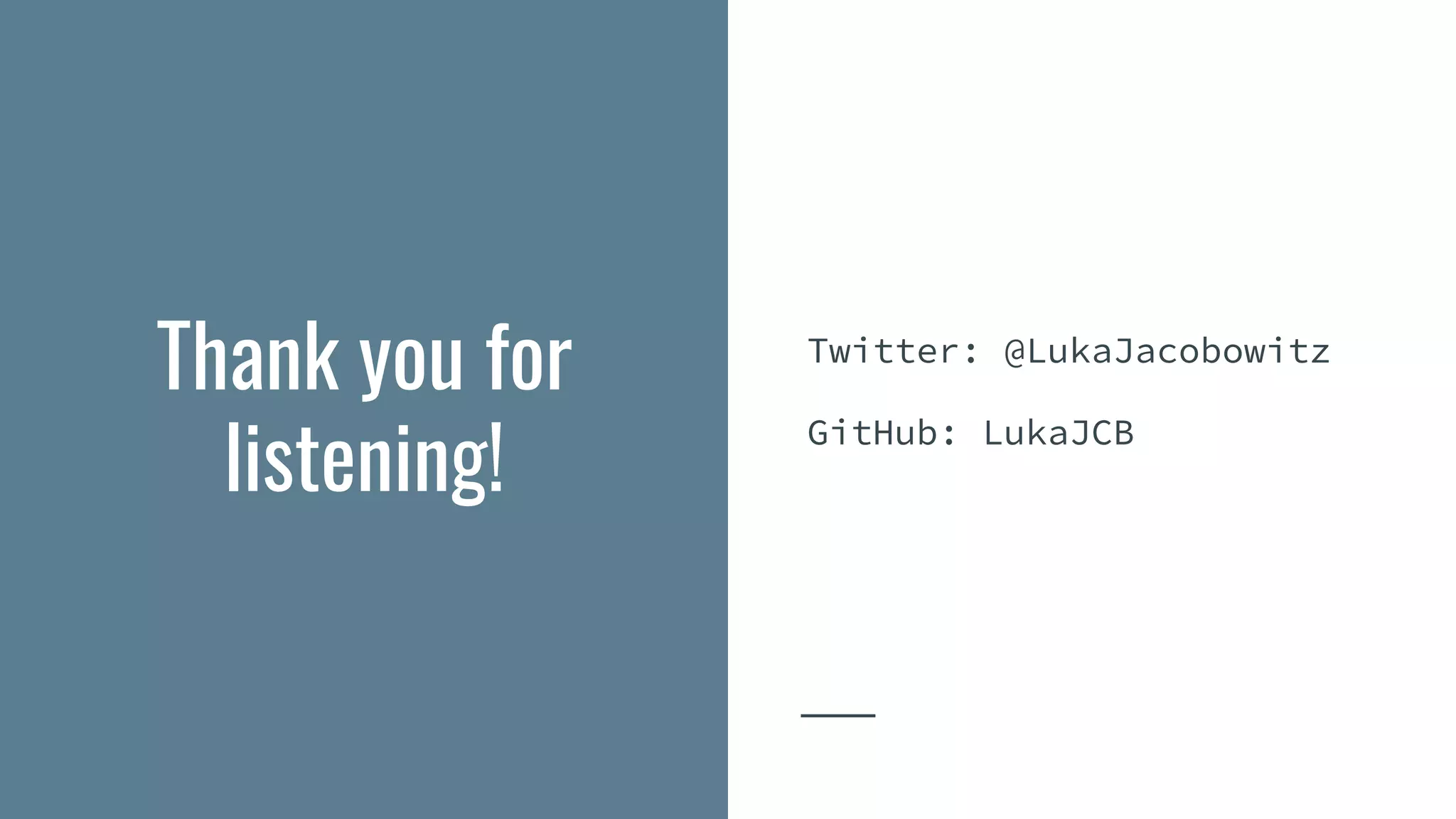This document provides an overview of algebraic structures like monoids, lattices, groups, and rings. It discusses how these concepts can be generalized to higher-kinded type classes in Scala. It also explores how Scala's type system relates to these structures, with sum and product types forming commutative rigs. Finally, it discusses how these structures can be useful for modeling parallelism, error handling, and other programming patterns in Scala.
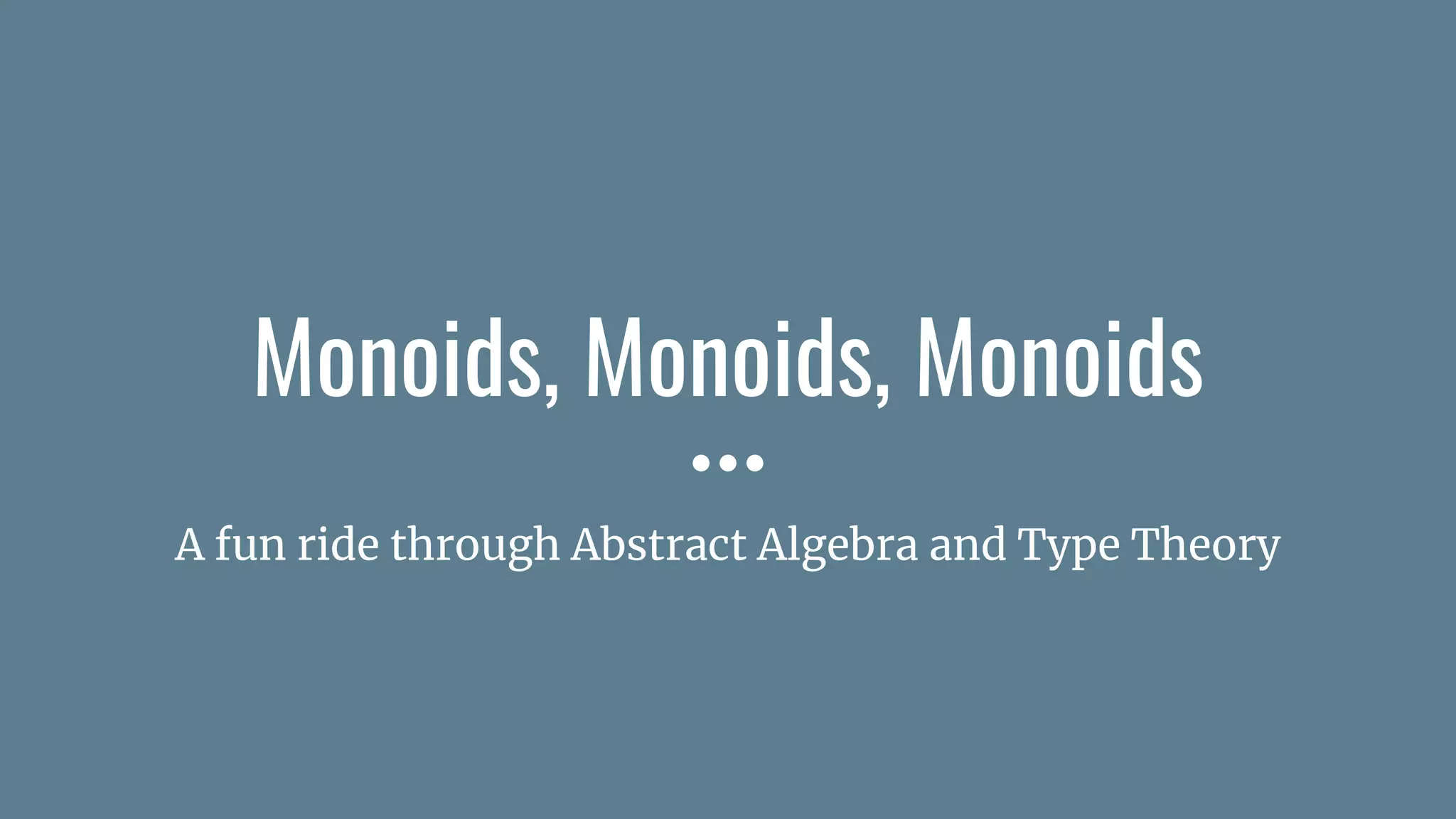
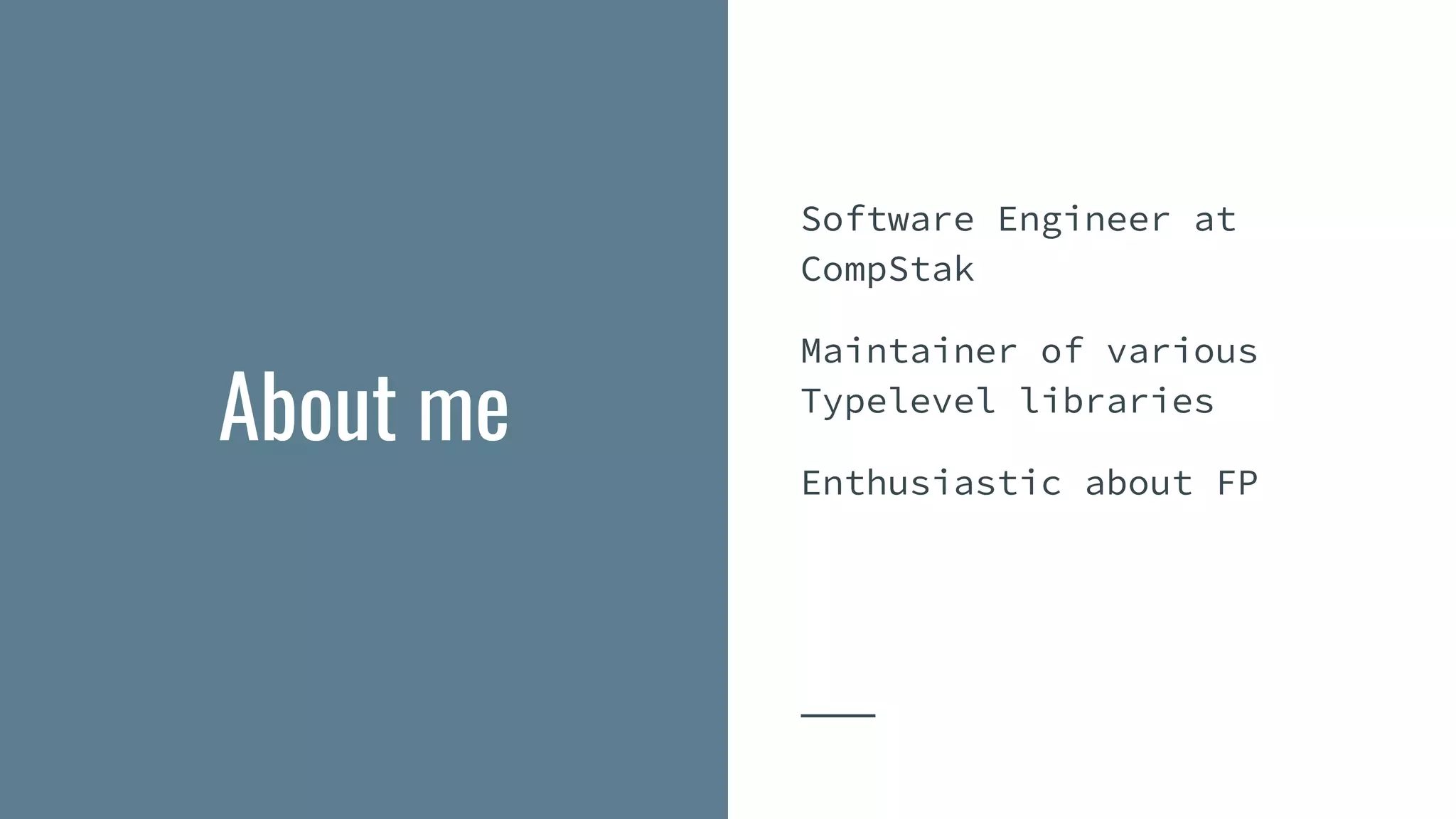
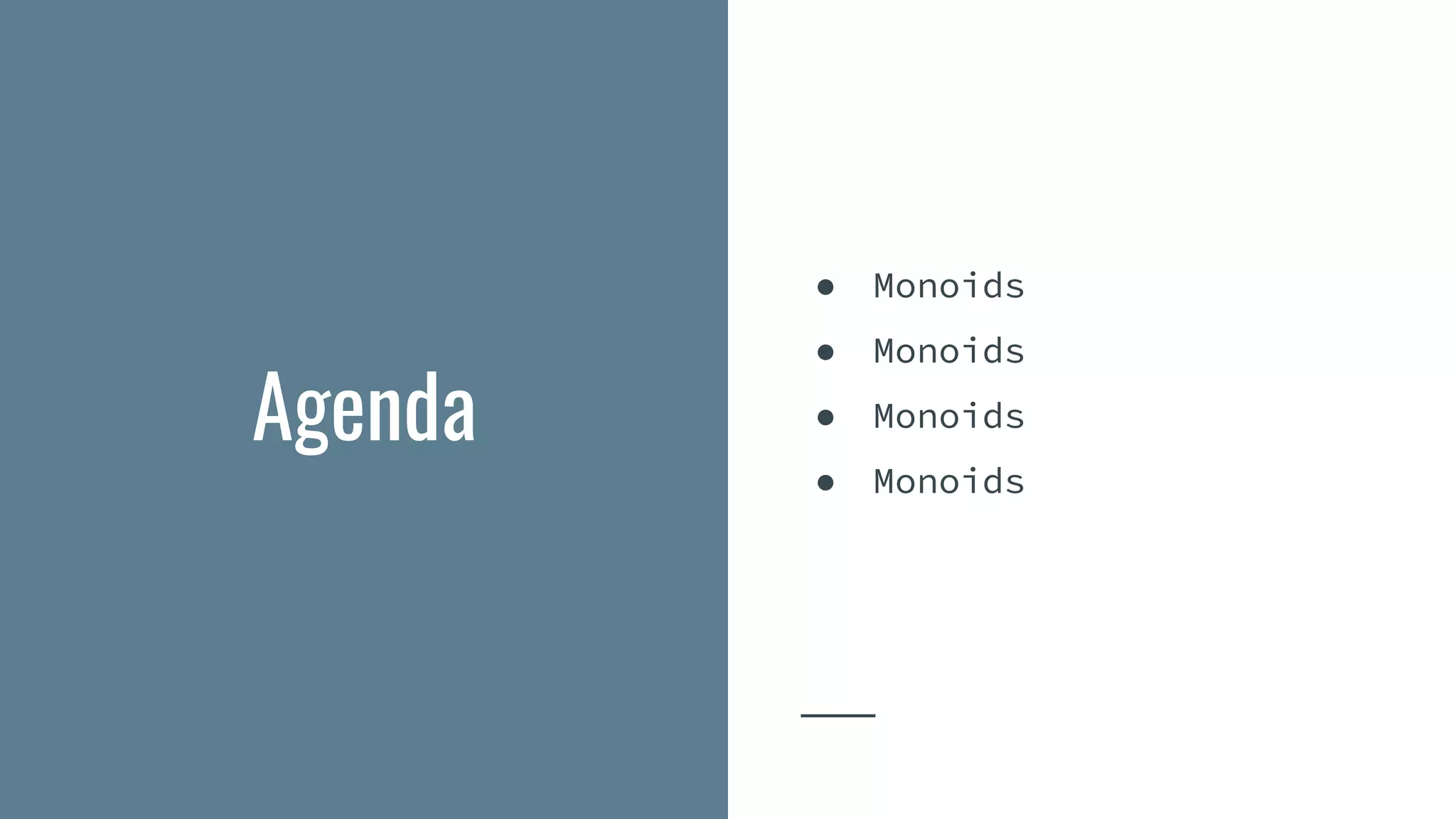
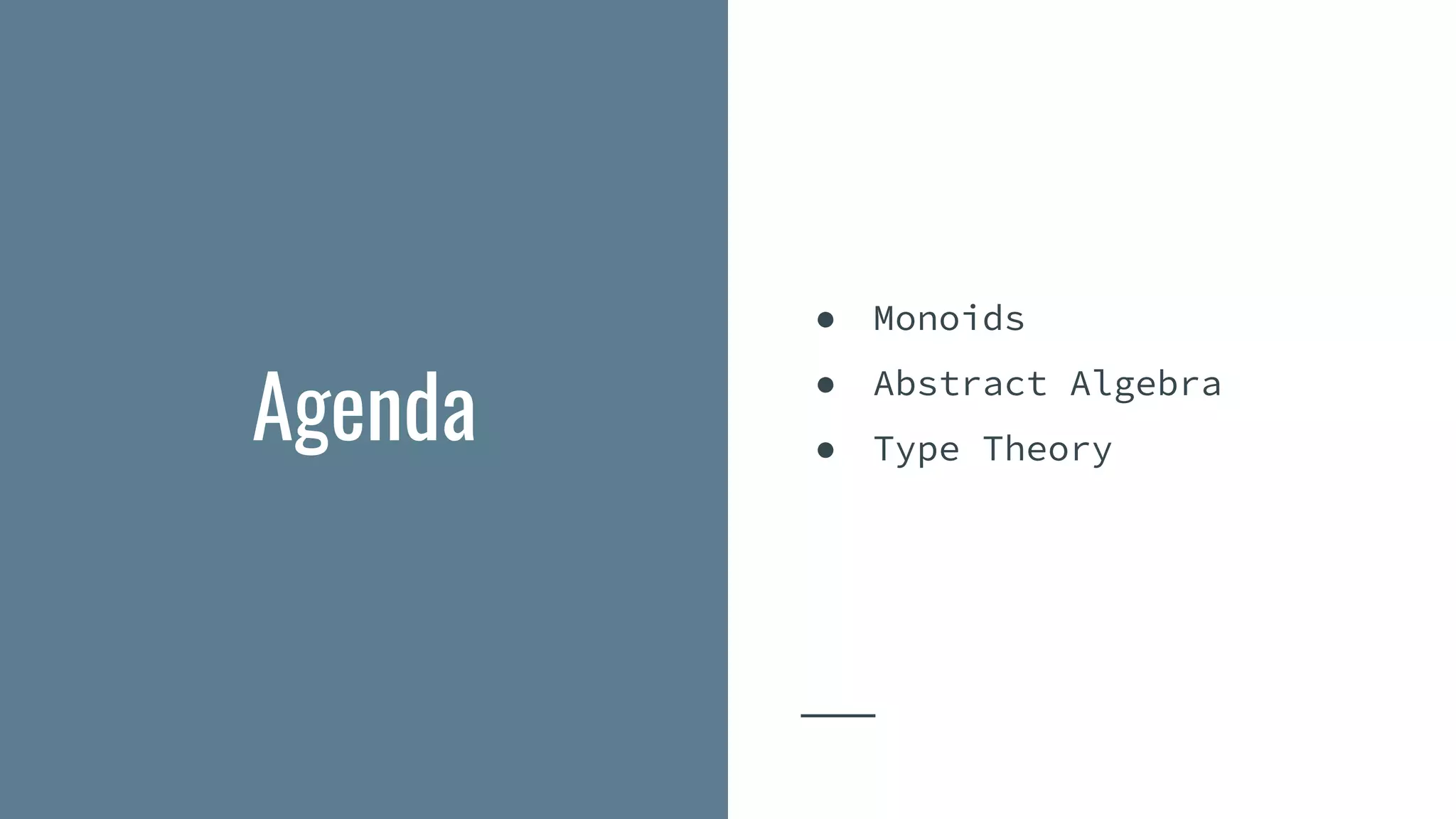
![Monoids - Intro
trait Monoid[A] {
def empty: A
def combine(x: A, y: A): A
}
implicit val monoidInt: Monoid[Int] = new Monoid[Int] {
def empty: Int = 0
def combine(a: Int, b: Int): Int = a + b
}](https://image.slidesharecdn.com/monoidsmonoidsmonoids-190902212037/75/Monoids-monoids-monoids-5-2048.jpg)
![Monoids
def combineInts(list: List[Int]): Int =
list.foldLeft(0)(_ + _)
def combineStrings(list: List[String]): String =
list.foldLeft("")(_ + _)
def combineSets[T](list: List[Set[T]]): Set[T] =
list.foldLeft(Set.empty[T])(_ union _)
def combineAll[T: Monoid](list: List[T]): T =
list.foldLeft(Monoid[T].empty)(_ combine _)](https://image.slidesharecdn.com/monoidsmonoidsmonoids-190902212037/75/Monoids-monoids-monoids-6-2048.jpg)
![Monoids everywhere
implicit def functionMonoid[A, B: Monoid] = new Monoid[A => B]
implicit def optionMonoid[A: Monoid]: Monoid[Option[A]]
implicit def tupleMonoid[A: Monoid, B: Monoid] = new Monoid[(A, B)]
implicit def mapMonoid[A, B: Monoid]: Monoid[Map[A, B]]
implicit def ioMonoid[A: Monoid]: Monoid[IO[A]]
And many more!](https://image.slidesharecdn.com/monoidsmonoidsmonoids-190902212037/75/Monoids-monoids-monoids-7-2048.jpg)
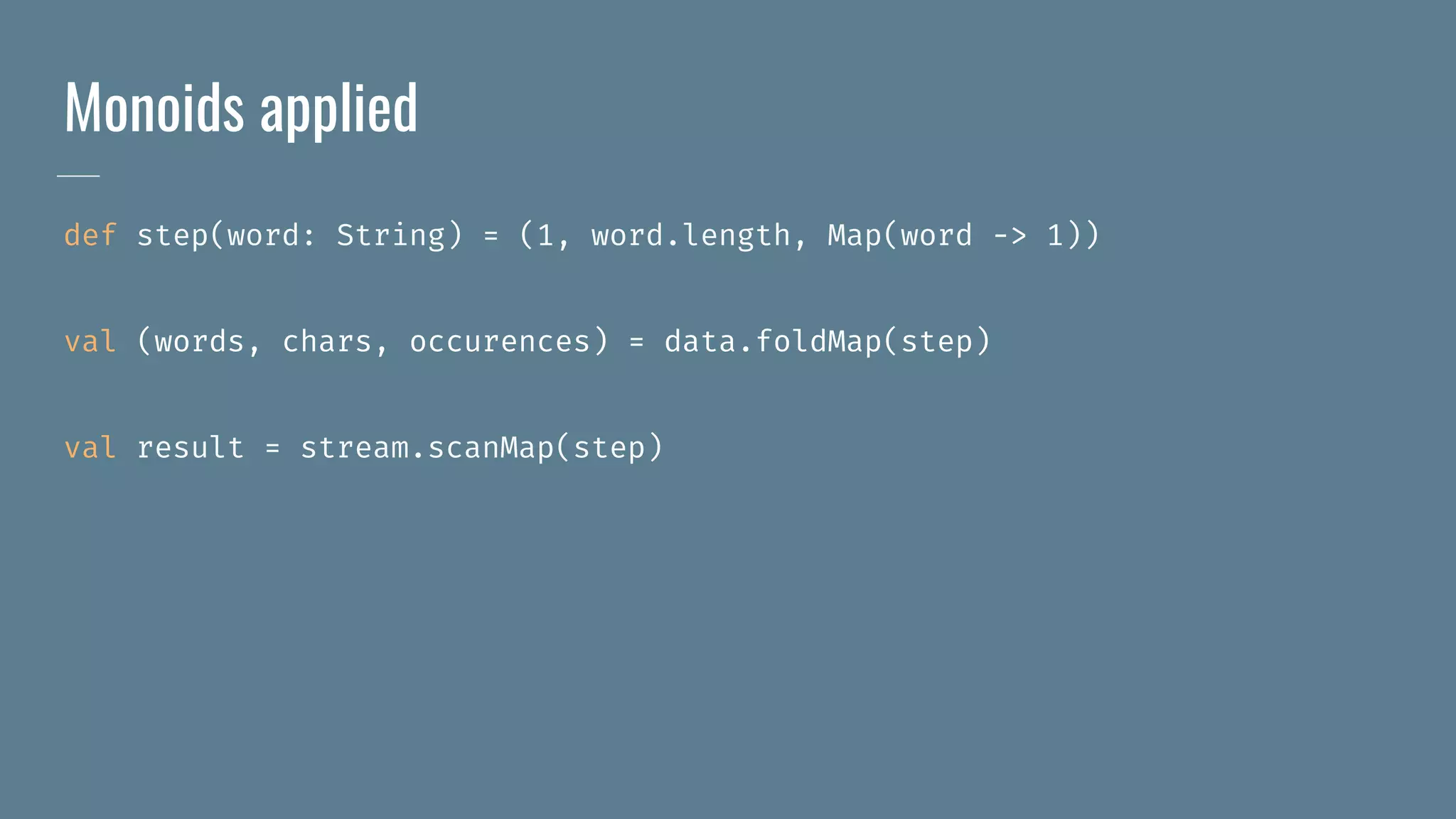
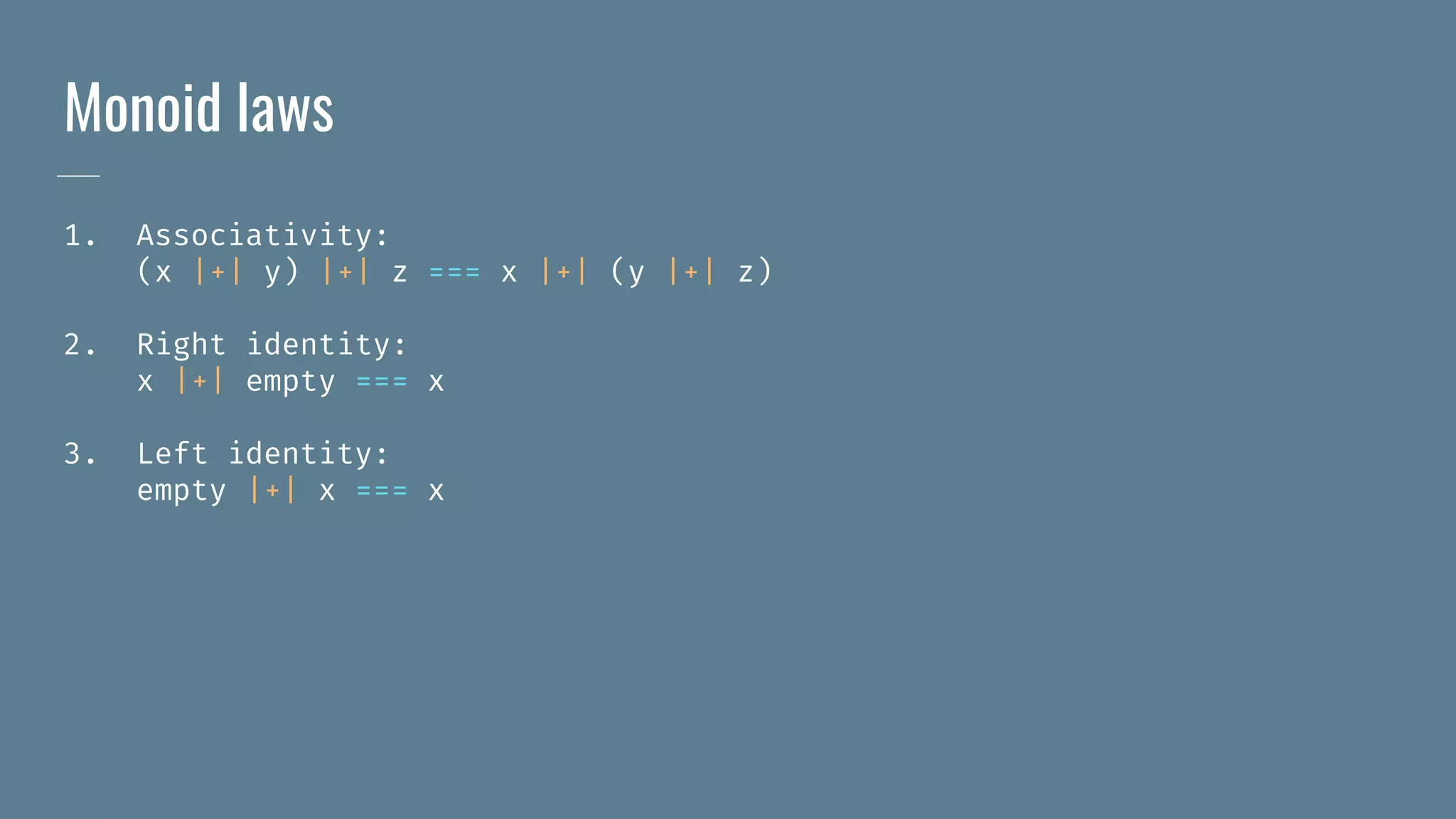
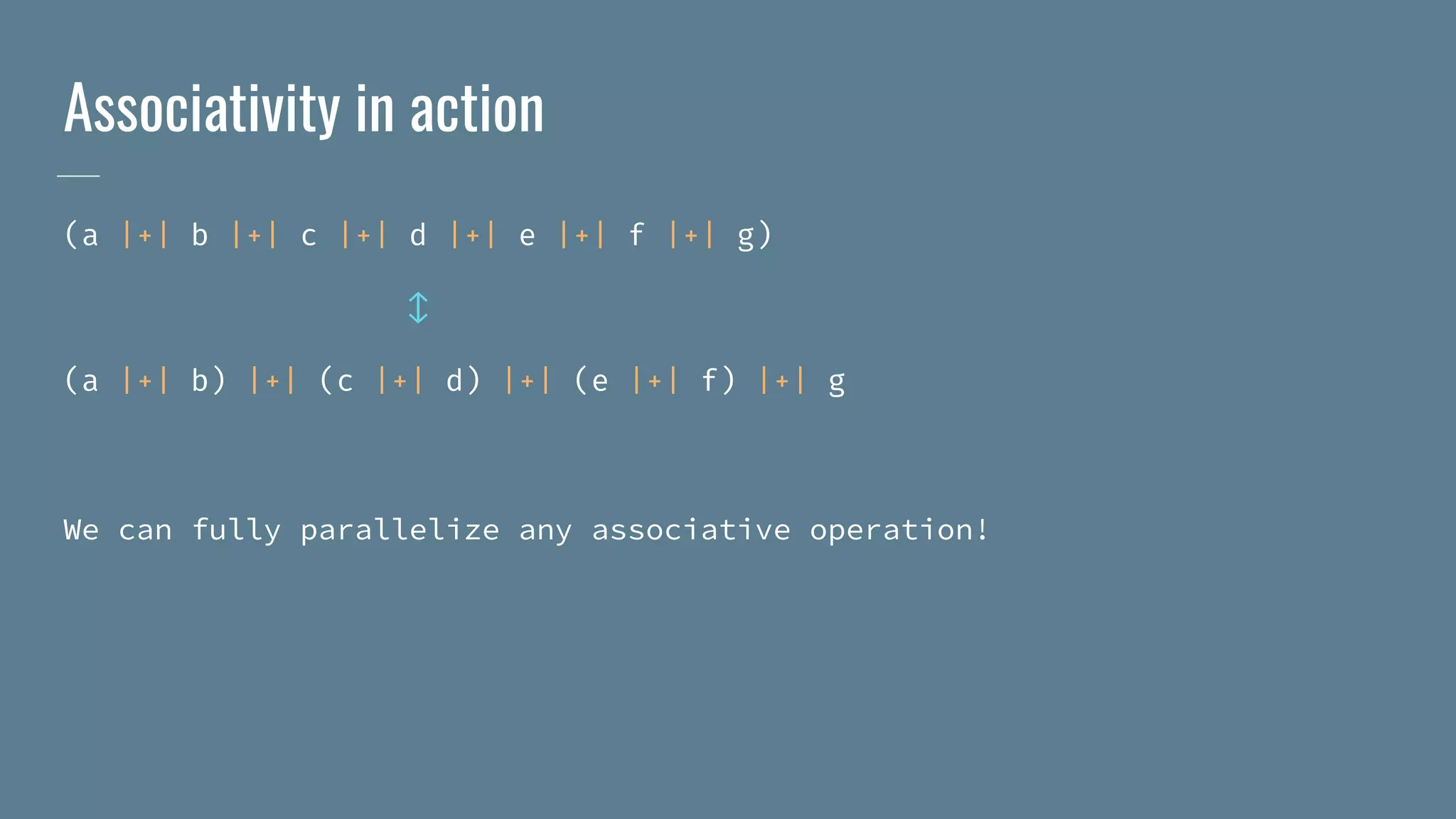
![Parallel aggregation
val stream: Stream[IO, A] = ...
val maxParallel: Int = getRunTime.availableProcessors
val result: IO[A] = stream.chunks
.mapAsync(maxParallel)(_.combineAll.pure[IO])
.compile
.foldMonoid](https://image.slidesharecdn.com/monoidsmonoidsmonoids-190902212037/75/Monoids-monoids-monoids-11-2048.jpg)
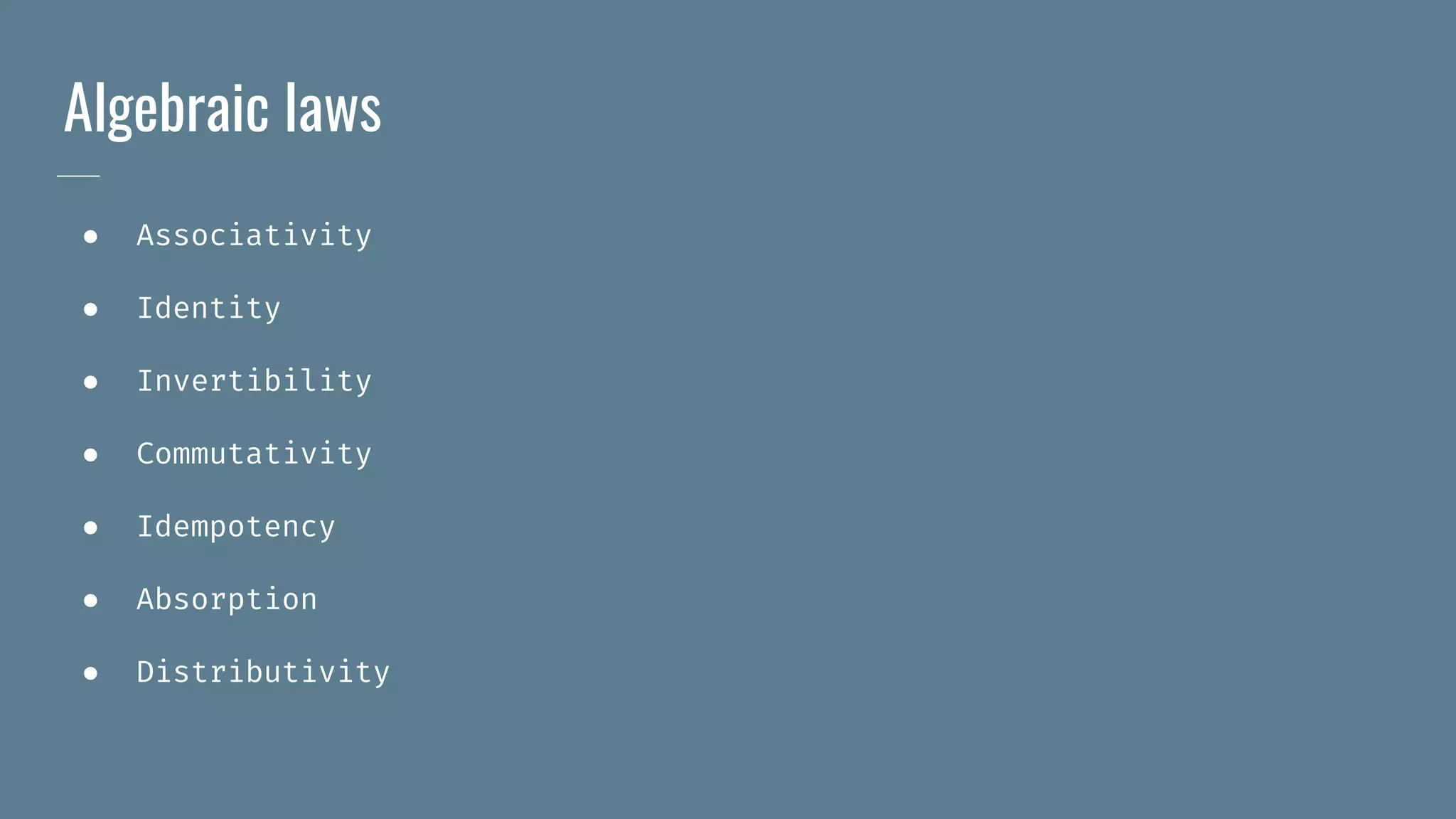
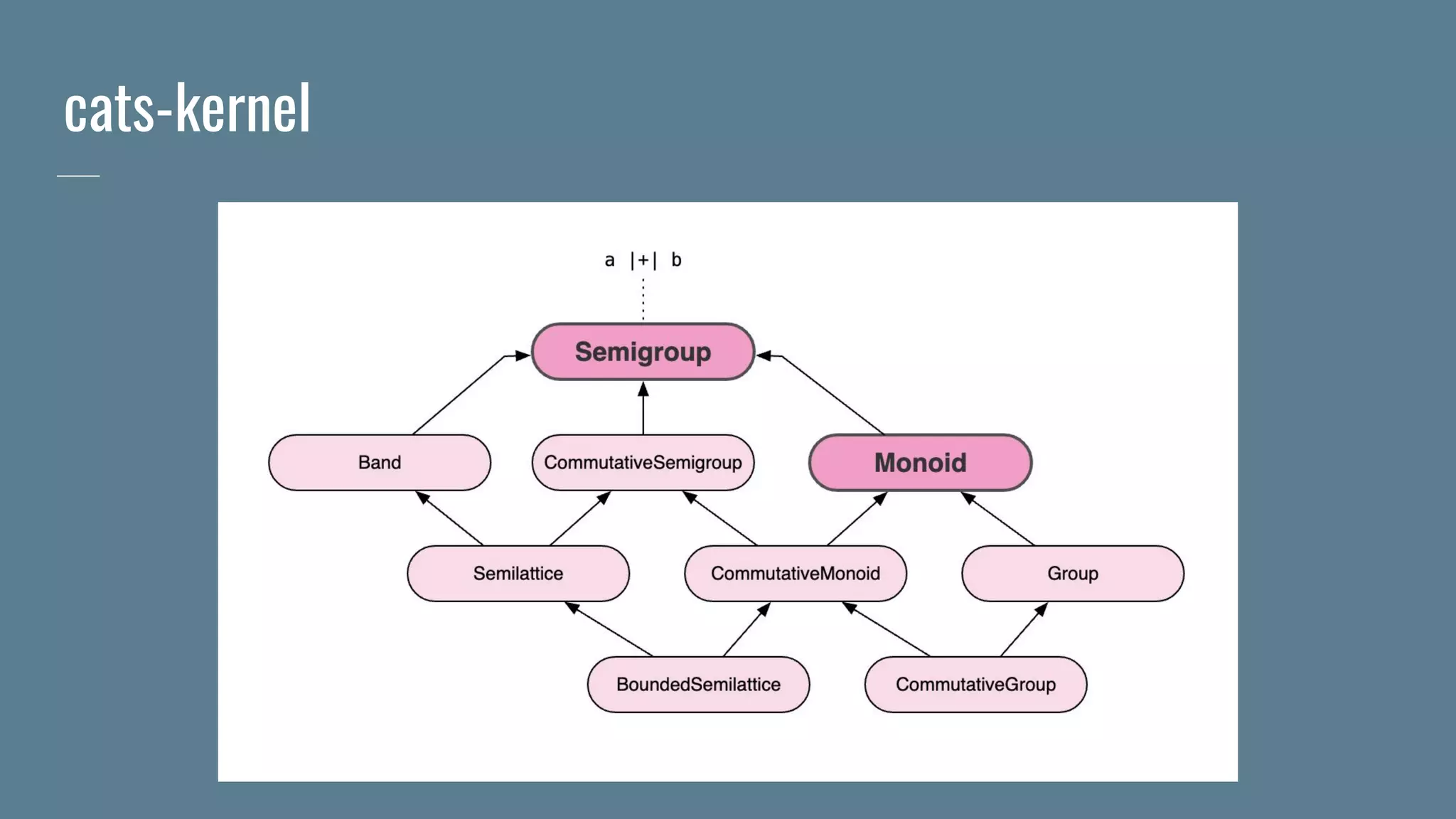

![Groups
trait Group[A] extends Monoid[A] {
def inverse(a: A): A
}
a |+| inverse(a) === empty
inverse(a) |+| a === empty
5 + (-5) === 0
4 * (¼) === 1
Set(1,2,3) symmetricDiff Set(1,2,3) === Set()](https://image.slidesharecdn.com/monoidsmonoidsmonoids-190902212037/75/Monoids-monoids-monoids-15-2048.jpg)
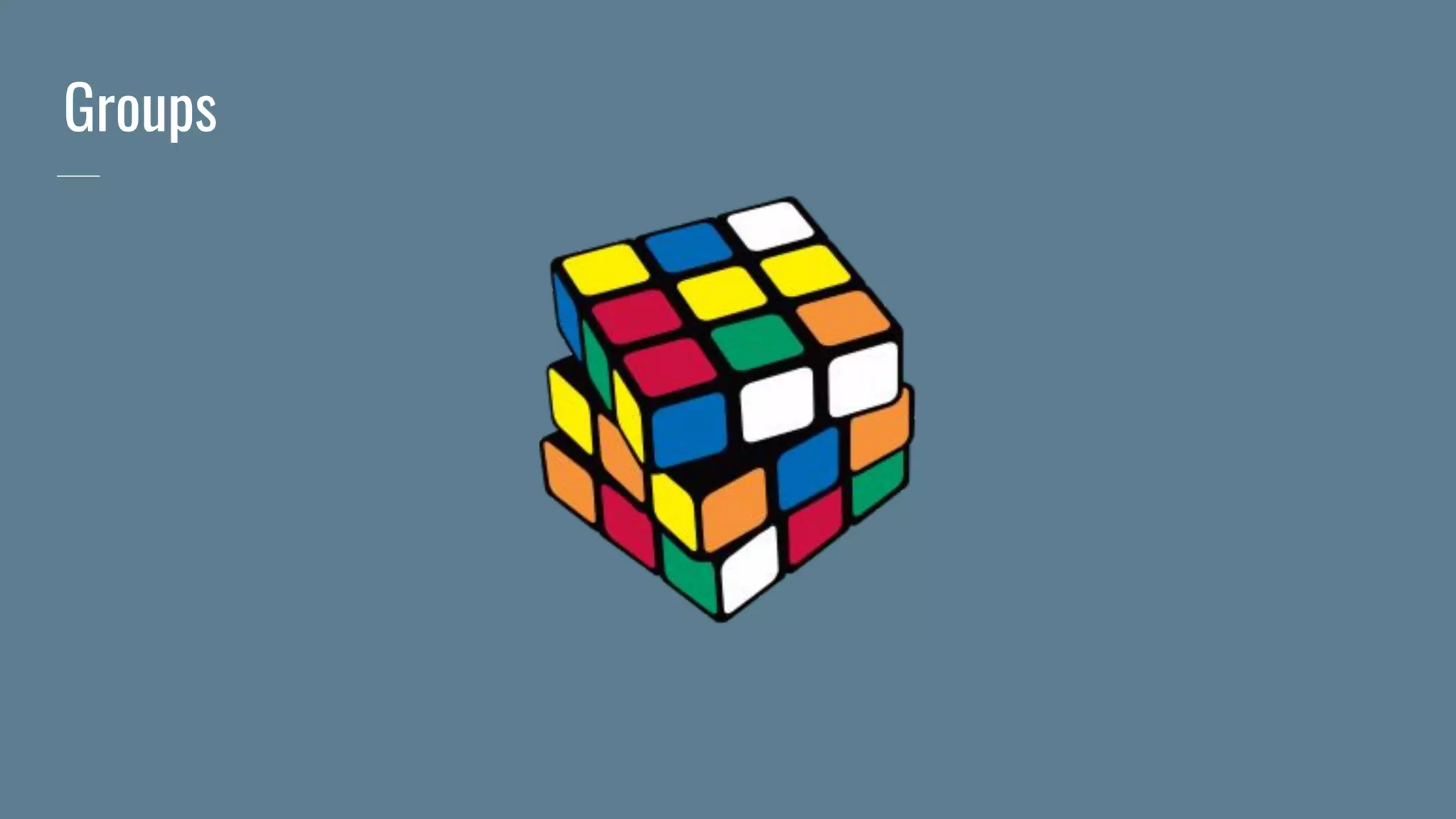
![Groups
sealed trait NList[+A]
case class Add[A](a: A) extends NList[A]
case class Remove[A](a: A) extends NList[A]
case object Empty extends NList[Nothing]
case class Concat[A](x: NList[A], y: NList[A]) extends NList[A]](https://image.slidesharecdn.com/monoidsmonoidsmonoids-190902212037/75/Monoids-monoids-monoids-17-2048.jpg)
![Semilattices
trait Semilattice[A] extends CommutativeSemigroup[A]
a |+| a === a
true && true === true
false && false === false
true || true === true
Set(1,2,3) union Set(1,2,3) === Set(1,2,3)
Set(1,2,3) intersect Set(1,2,3) === Set(1,2,3)
max(7, 7) === 7](https://image.slidesharecdn.com/monoidsmonoidsmonoids-190902212037/75/Monoids-monoids-monoids-18-2048.jpg)
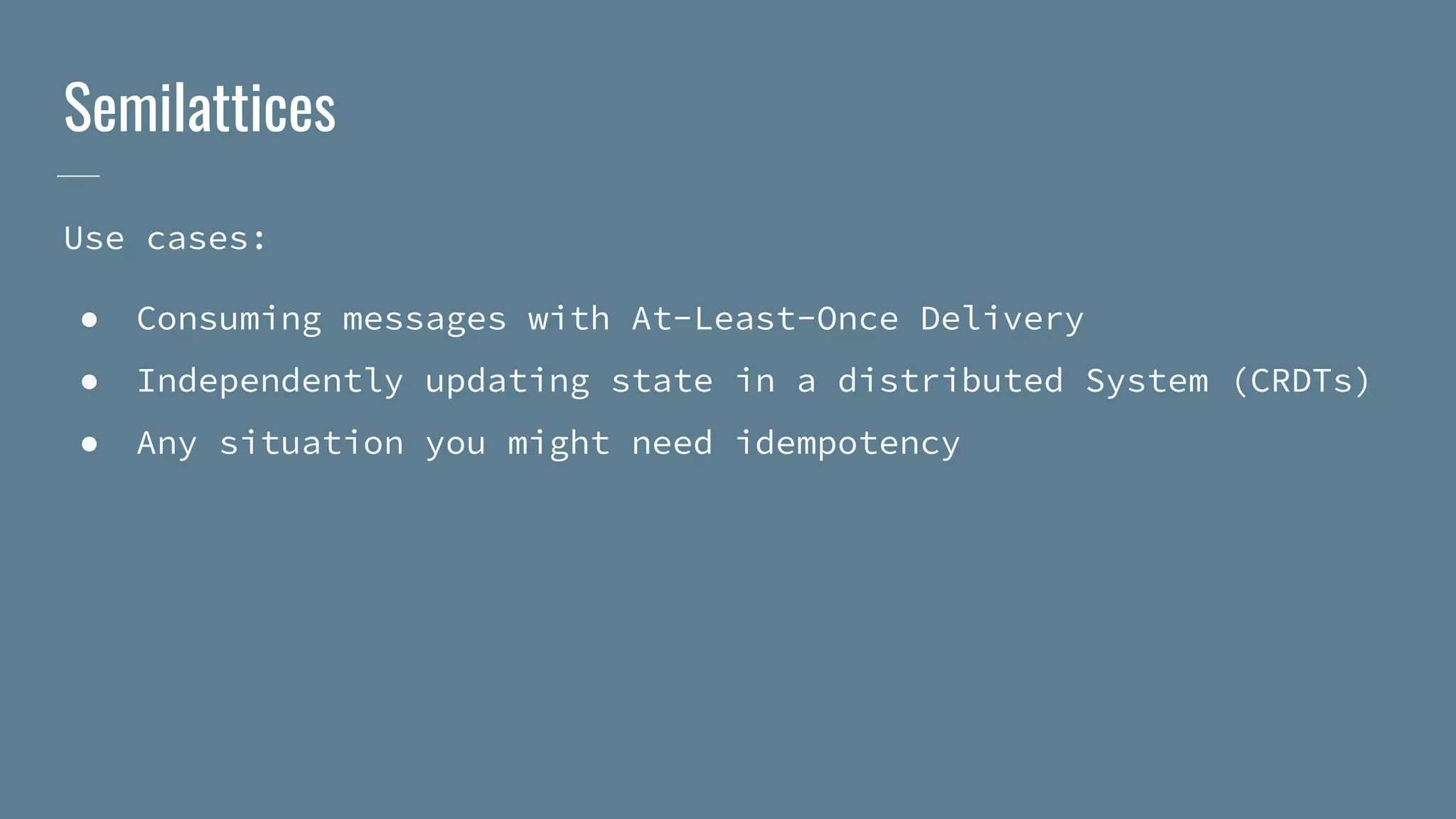

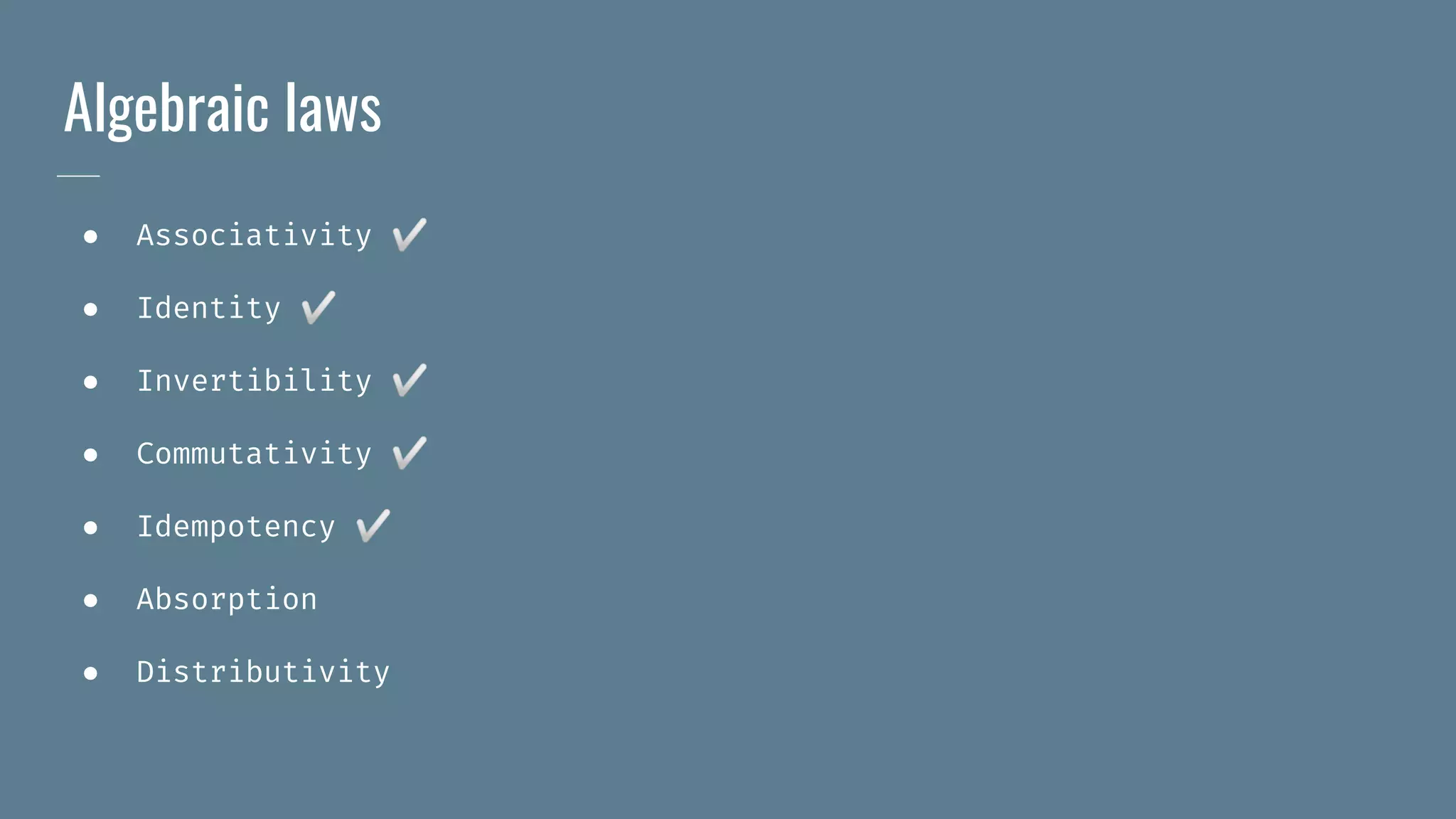
![Ring-like structures
trait Semiring[A] {
def plus(x: A, y: A): A
def times(x: A, y: A): A
def zero: A
}
plus forms a commutative Monoid with zero as an identity
times forms a Semigroup
zero “absorbs” times:
a * 0 === 0
times “distributes” over plus:
a * (b + c) === (a * b) + (a * c)](https://image.slidesharecdn.com/monoidsmonoidsmonoids-190902212037/75/Monoids-monoids-monoids-22-2048.jpg)

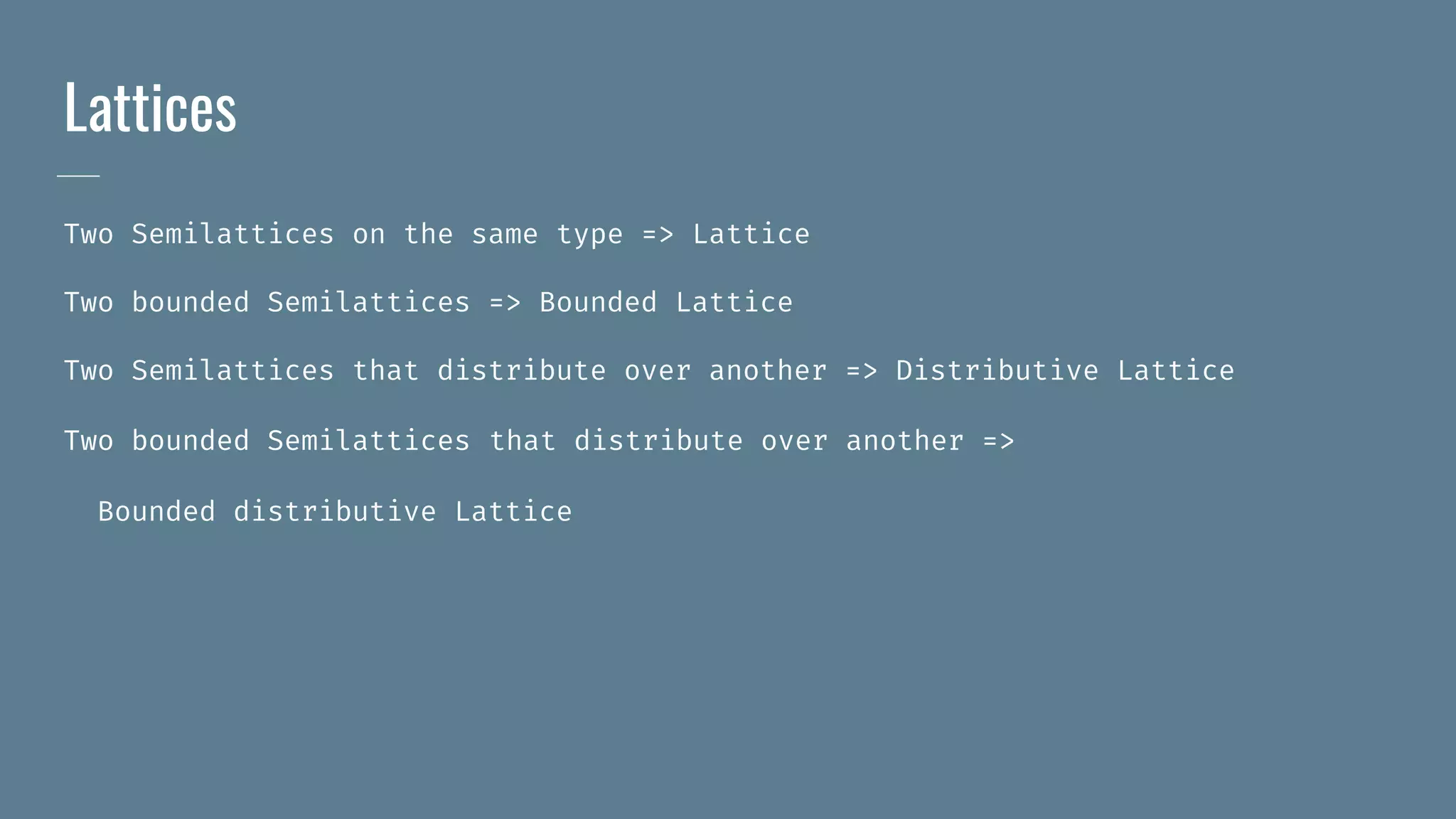

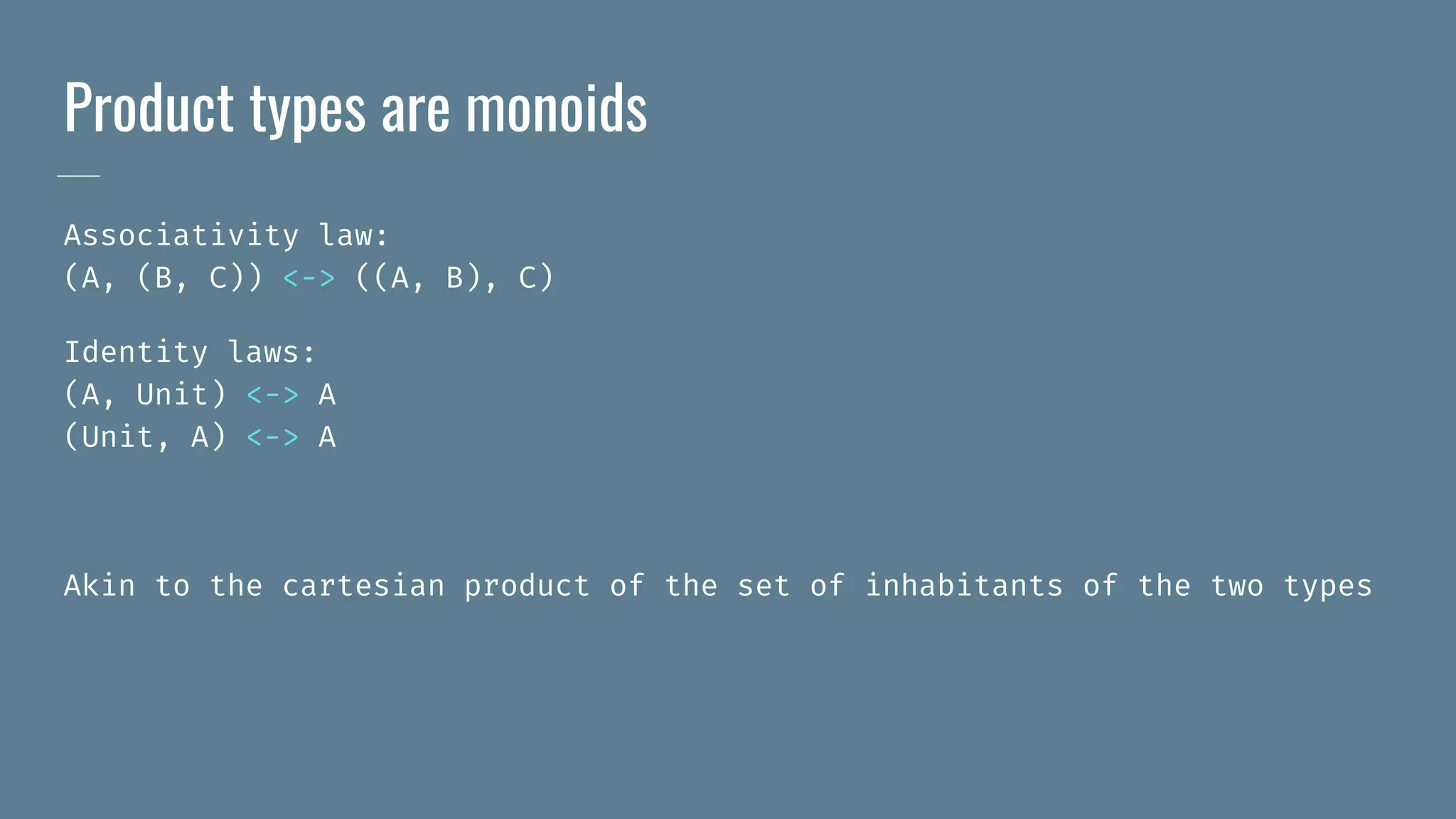
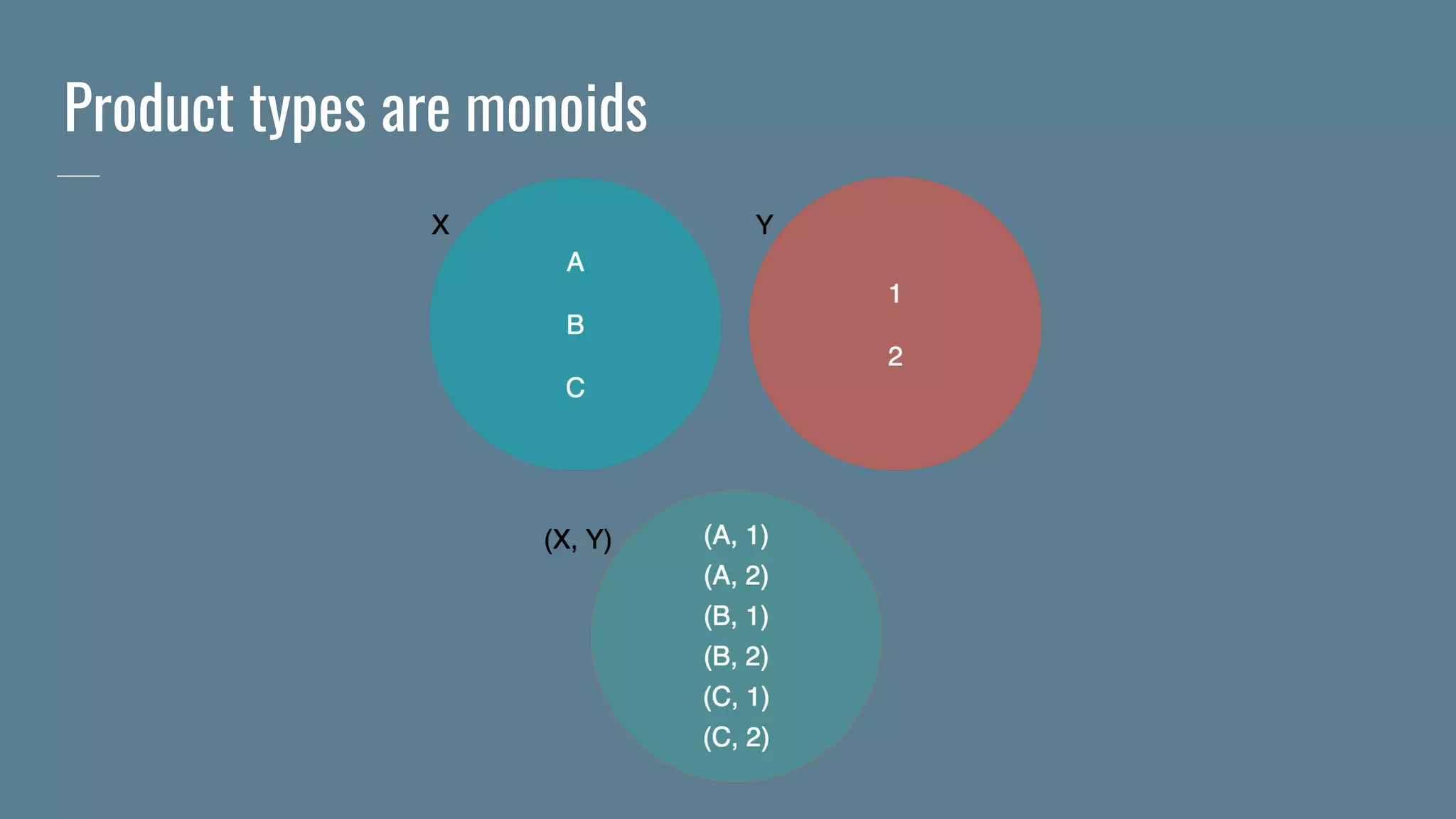
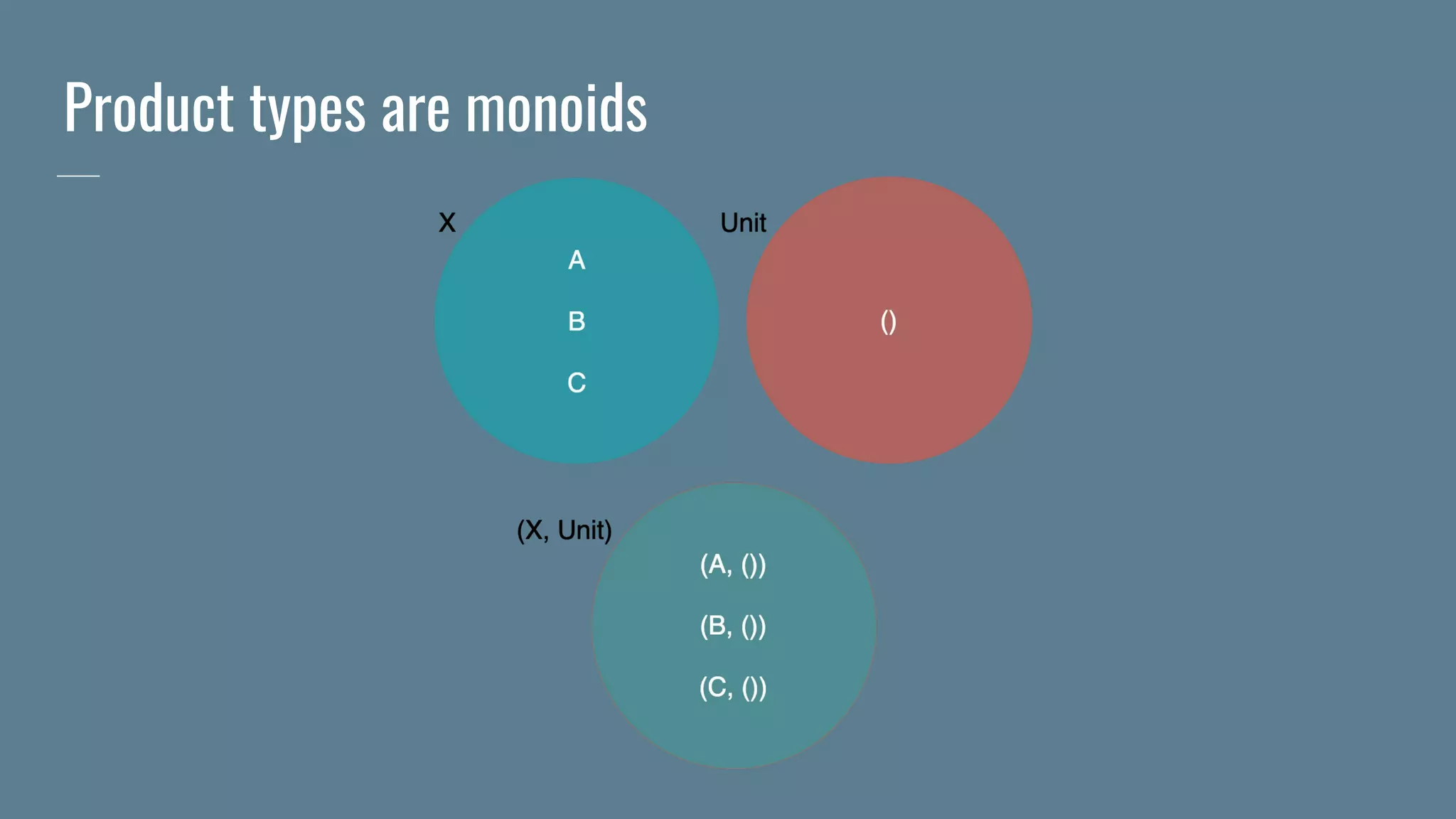
![Sum types are monoids
Associativity law:
Either[A, Either[B, C]] <-> Either[Either[A, B], C]
Identity laws:
Either[A, Nothing] <-> A
Either[Nothing, A] <-> A
Akin to the disjoint union of the set of inhabitants of the two types](https://image.slidesharecdn.com/monoidsmonoidsmonoids-190902212037/75/Monoids-monoids-monoids-29-2048.jpg)
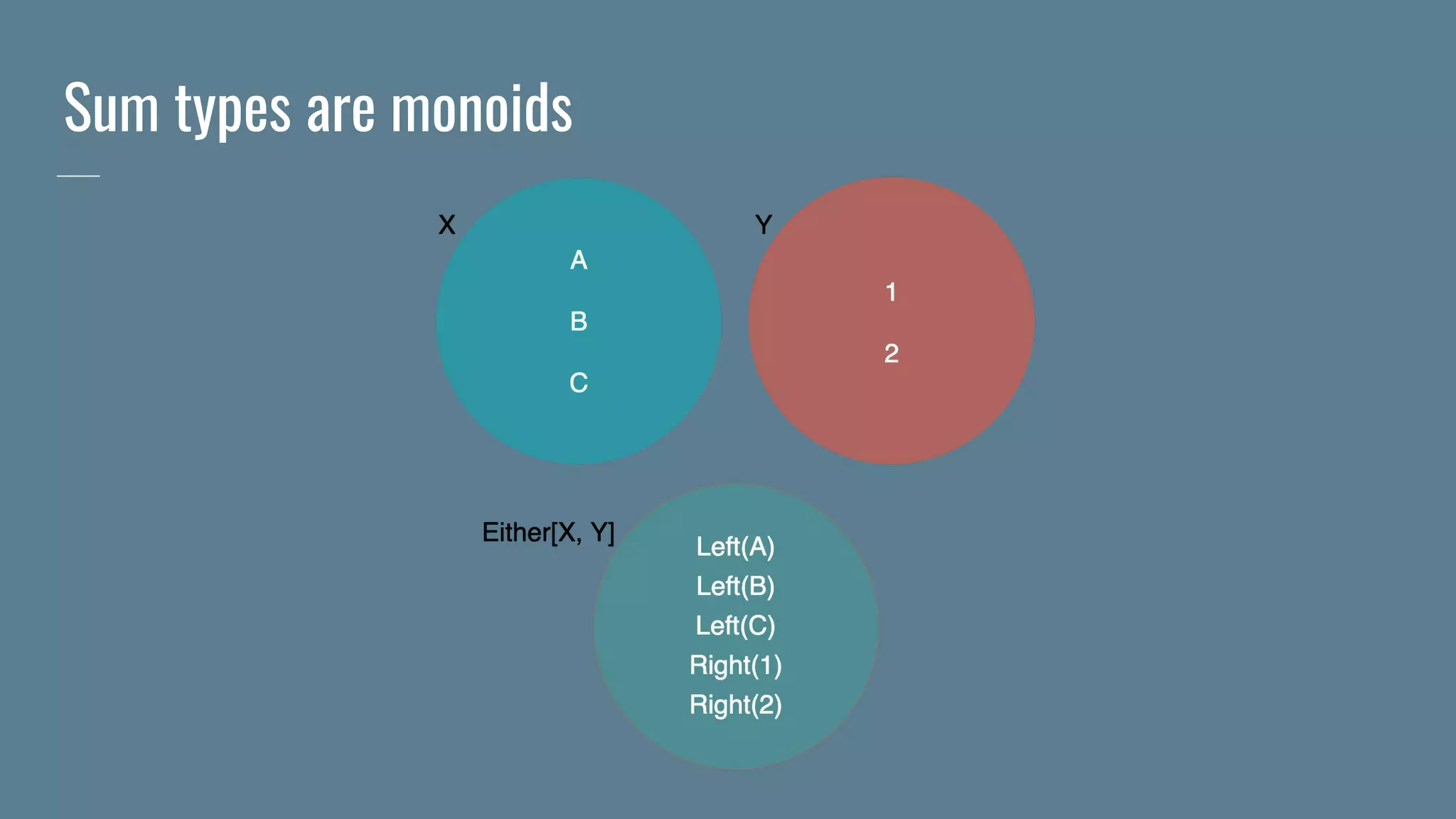

![How is this relevant?
trait Semigroupal[F[_]] {
def product[A, B](fa: F[A], fb: F[B]): F[(A, B)]
}
An abstract higher kinded semigroup, that merges two contexts inside a
product type.
trait Apply[F[_]] extends Semigroupal[F] with Functor[F] {
def ap[A, B](fa: F[A])(f: F[A => B]): F[B]
def product[A, B](fa: F[A])(fb: F[B]): F[(A, B)] =
ap(fa)(fb.map(b => a => (a, b)))
}](https://image.slidesharecdn.com/monoidsmonoidsmonoids-190902212037/75/Monoids-monoids-monoids-32-2048.jpg)
![Apply is a Semigroupal functor
trait Monoidal[F[_]] extends Semigroupal[F] {
def unit: F[Unit]
}
An abstract higher kinded monoid, that uses the product type identity as
its own identity
trait Applicative[F[_]] extends Apply[F] with Monoidal[F] {
def pure[A](a: A): F[A]
def unit: F[Unit] =
pure(())
}](https://image.slidesharecdn.com/monoidsmonoidsmonoids-190902212037/75/Monoids-monoids-monoids-33-2048.jpg)
![We can do the same with sum types
trait SumSemigroupal[F[_]] {
def sum[A, B](fa: F[A], fb: F[B]): F[Either[A, B]]
}
trait SumMonoidal[F[_]] extends SumSemigroupal[F] {
def nothing: F[Nothing]
}
An abstract higher kinded monoid, that merges two contexts inside a sum
type.](https://image.slidesharecdn.com/monoidsmonoidsmonoids-190902212037/75/Monoids-monoids-monoids-34-2048.jpg)
![We can do the same with sum types
trait SemigroupK[F[_]] {
def sum[A, B](fa: F[A], fb: F[B]): F[Either[A, B]]
def combineK[A](x: F[A], y: F[A]): F[A] =
sum(x, y).map(_.merge)
}
trait MonoidK[F[_]] extends SemigroupK[F] {
def empty[A]: F[A]
}](https://image.slidesharecdn.com/monoidsmonoidsmonoids-190902212037/75/Monoids-monoids-monoids-35-2048.jpg)
(f: A => M): M
def foldMapK[G[_]: MonoidK, A, B](fa: F[A])(f: A => G[B]): G[B]
def traverse[G[_]: Applicative, A, B](l: F[A])(f: A => G[B]): G[F[B]]
def foldMapM[G[_]: Monad, A, B: Monoid](fa: F[A])(f: A => G[B]): G[B]](https://image.slidesharecdn.com/monoidsmonoidsmonoids-190902212037/75/Monoids-monoids-monoids-36-2048.jpg)
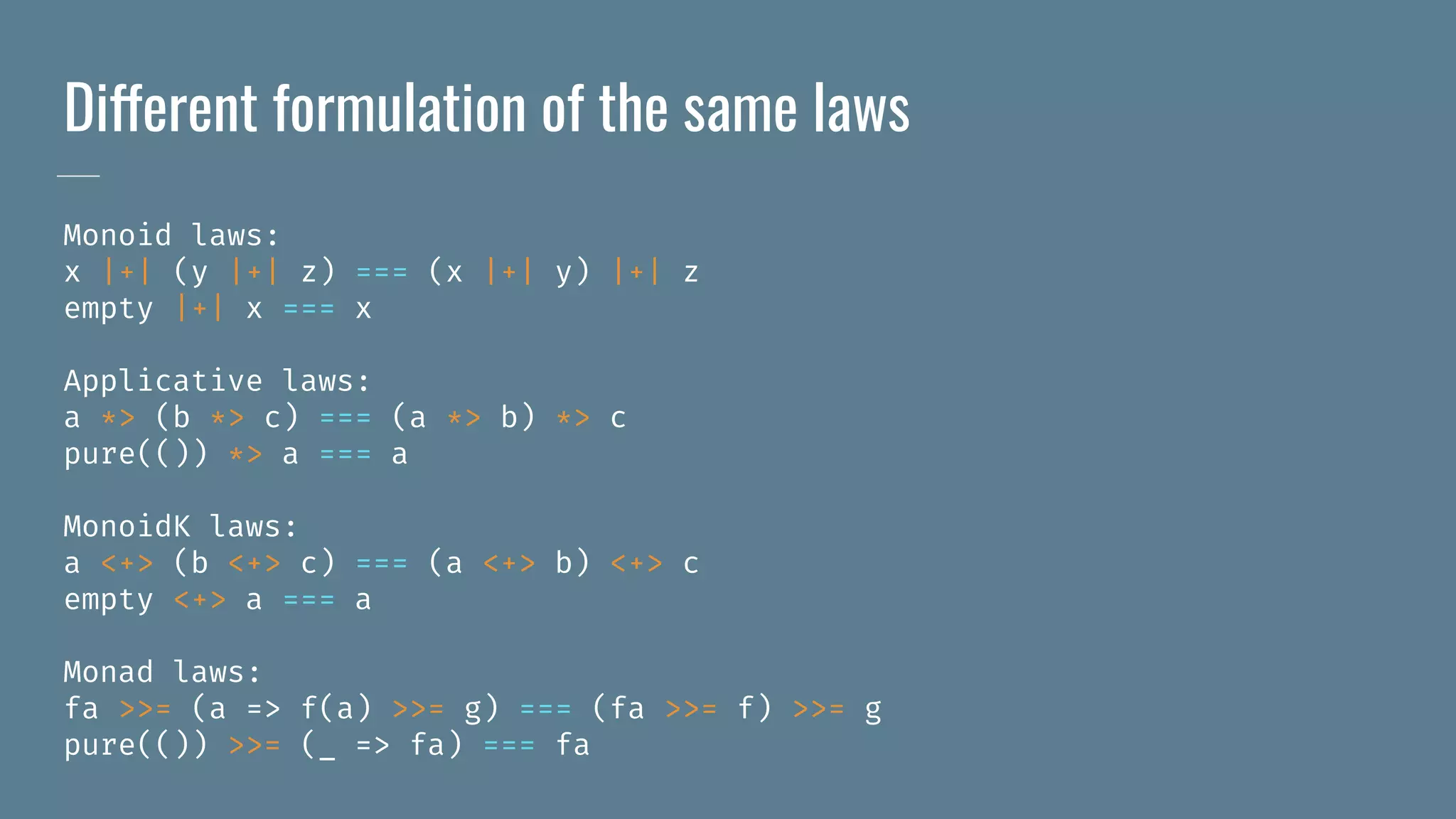
![Sum and product types form a commutative Rig 😮
type +[A, B] = Either[A, B]
type *[A, B] = (A, B)
type Zero = Nothing
type One = Unit
Absorption law:
A * Zero <-> Zero
Distributivity law:
A * (B + C) <-> (A * B) + (A * C)
Commutativity laws:
A + B <-> B + A
A * B <-> B * A](https://image.slidesharecdn.com/monoidsmonoidsmonoids-190902212037/75/Monoids-monoids-monoids-38-2048.jpg)
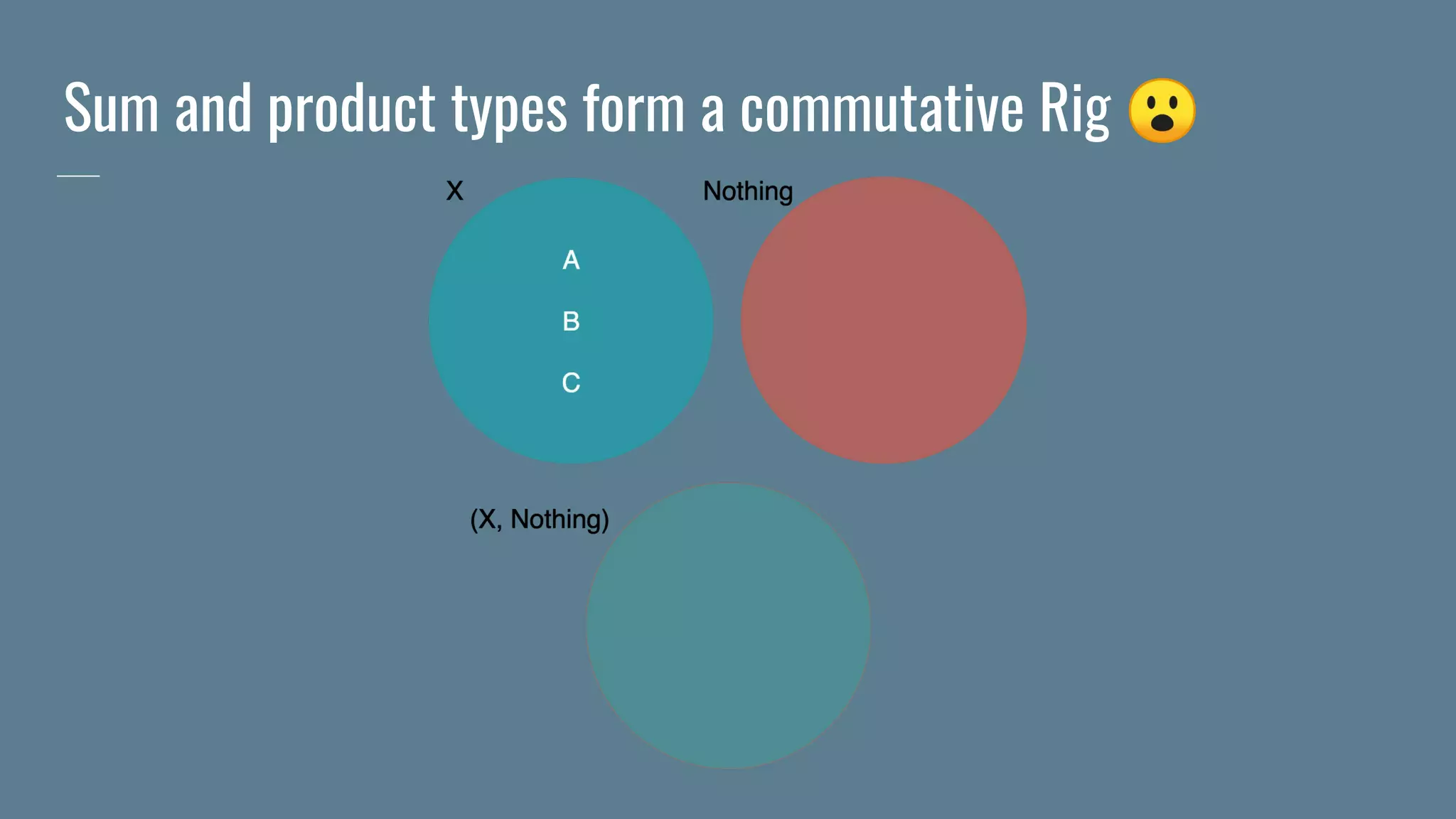
![Alternative is a higher kinded Rig
trait Alternative[F[_]] {
def sum[A, B](fa: F[A], fb: F[B]): F[Either[A, B]]
def product[A, B](fa: F[A], fb: F[B]): F[(A, B)]
def pure[A](a: A): F[A]
def empty[A]: F[A]
}](https://image.slidesharecdn.com/monoidsmonoidsmonoids-190902212037/75/Monoids-monoids-monoids-40-2048.jpg)
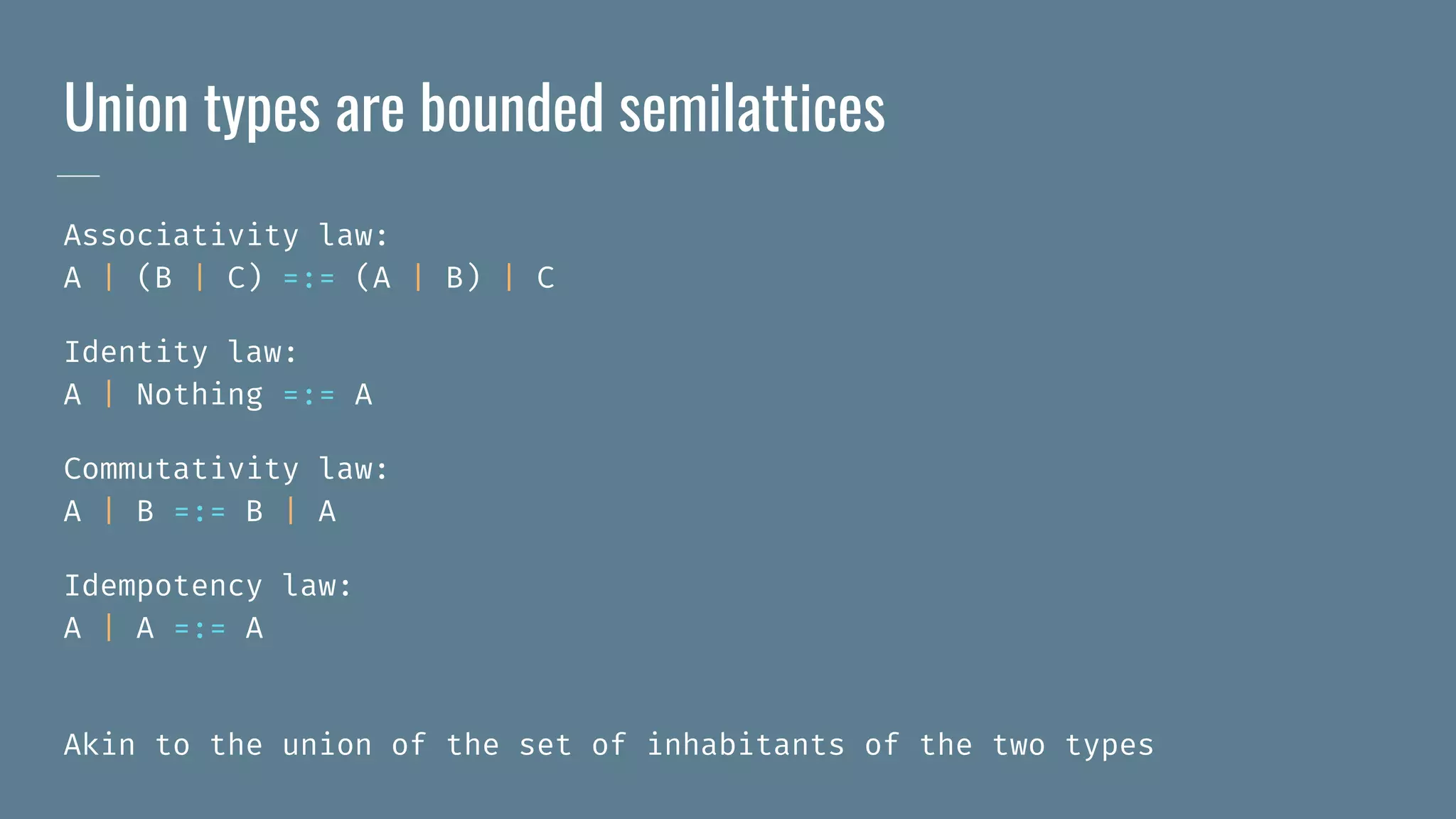
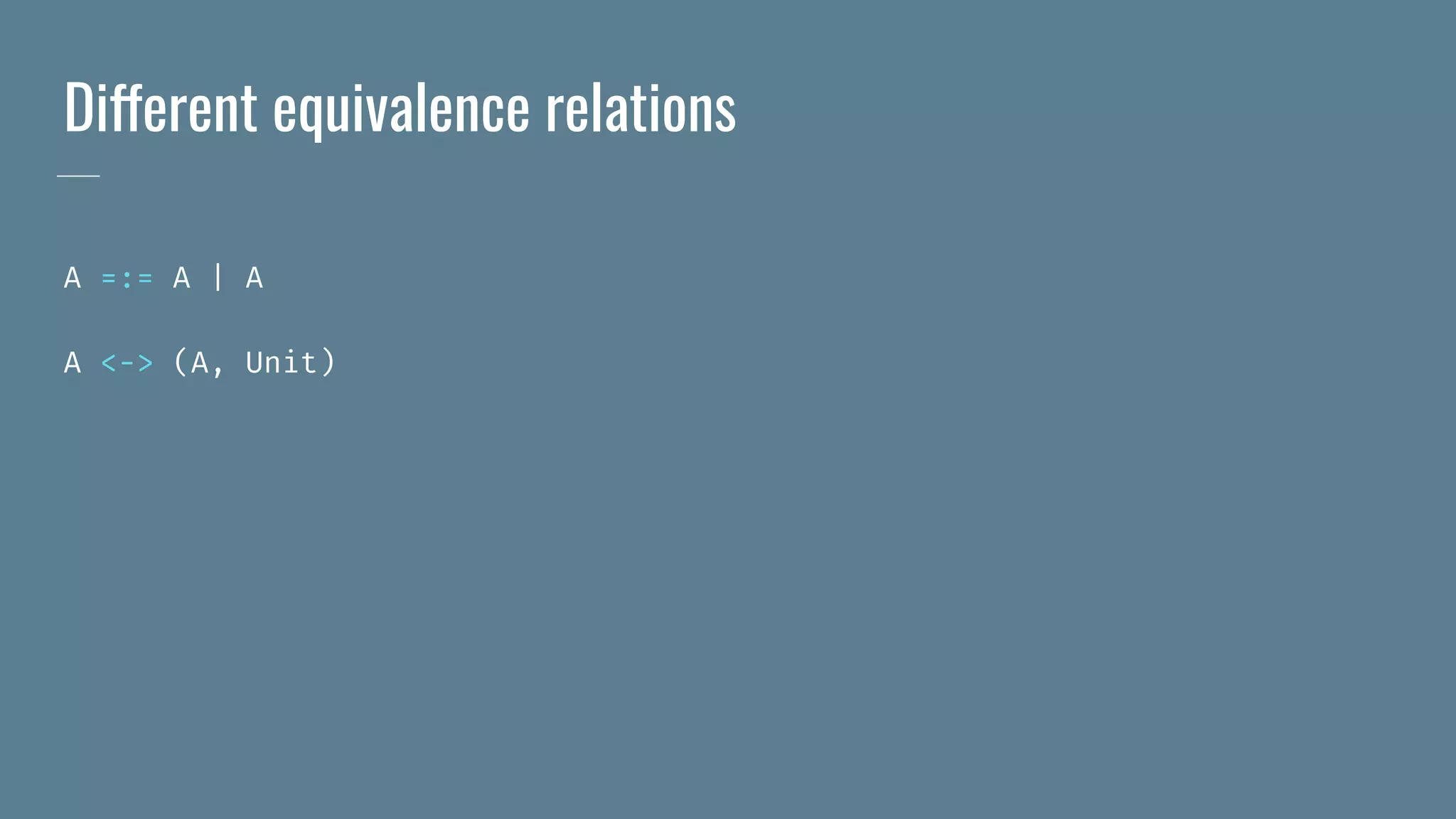

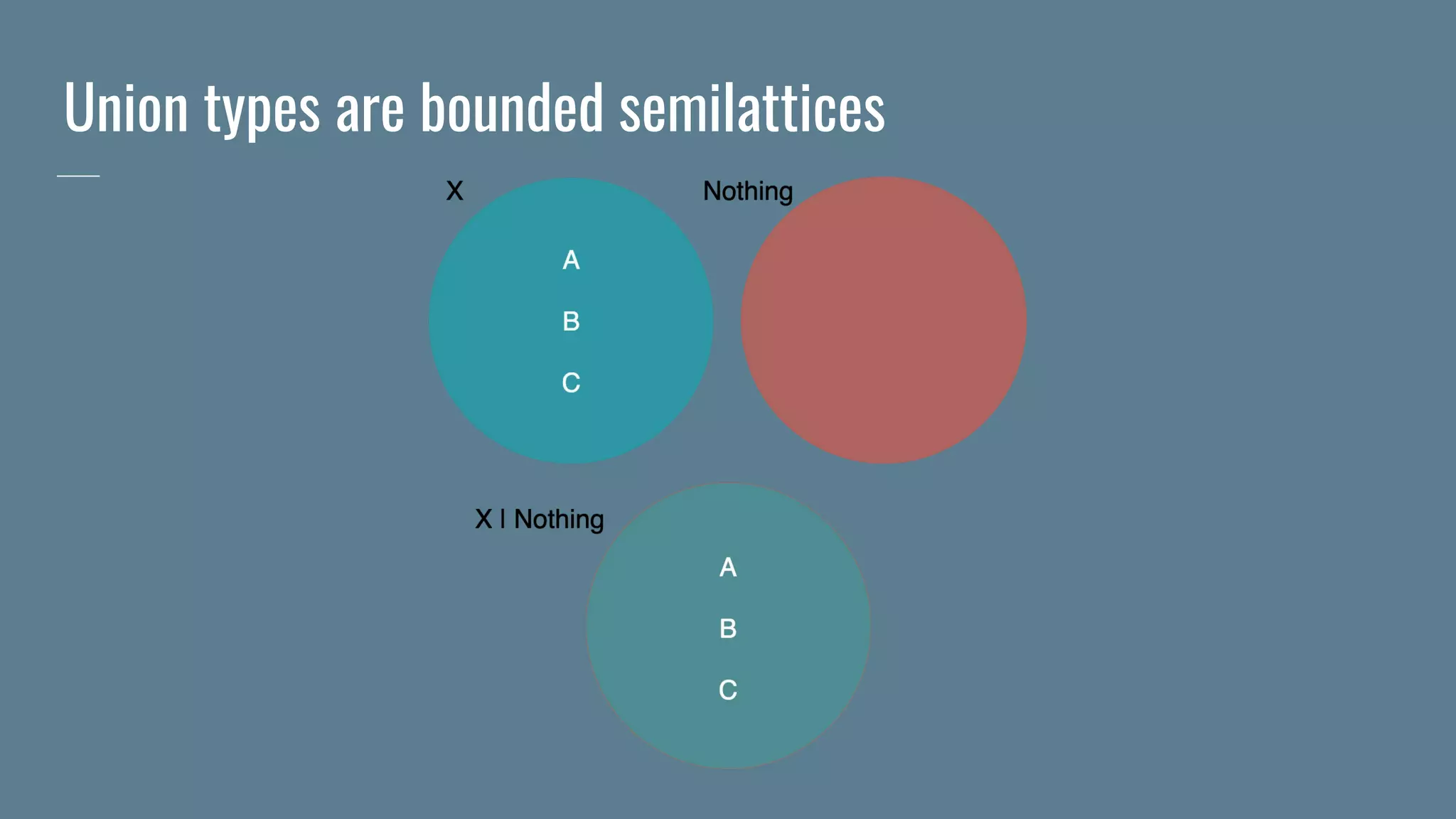
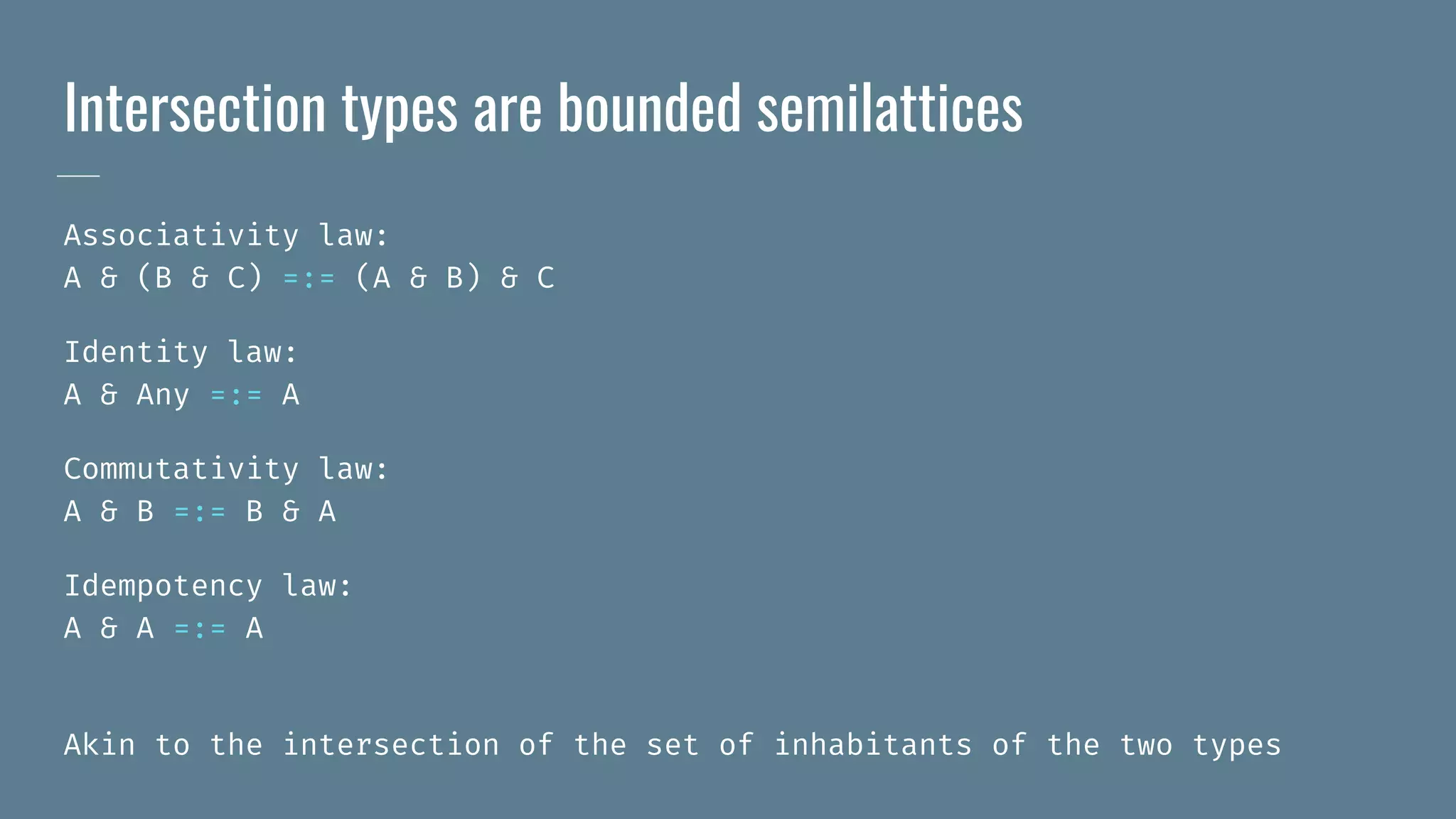

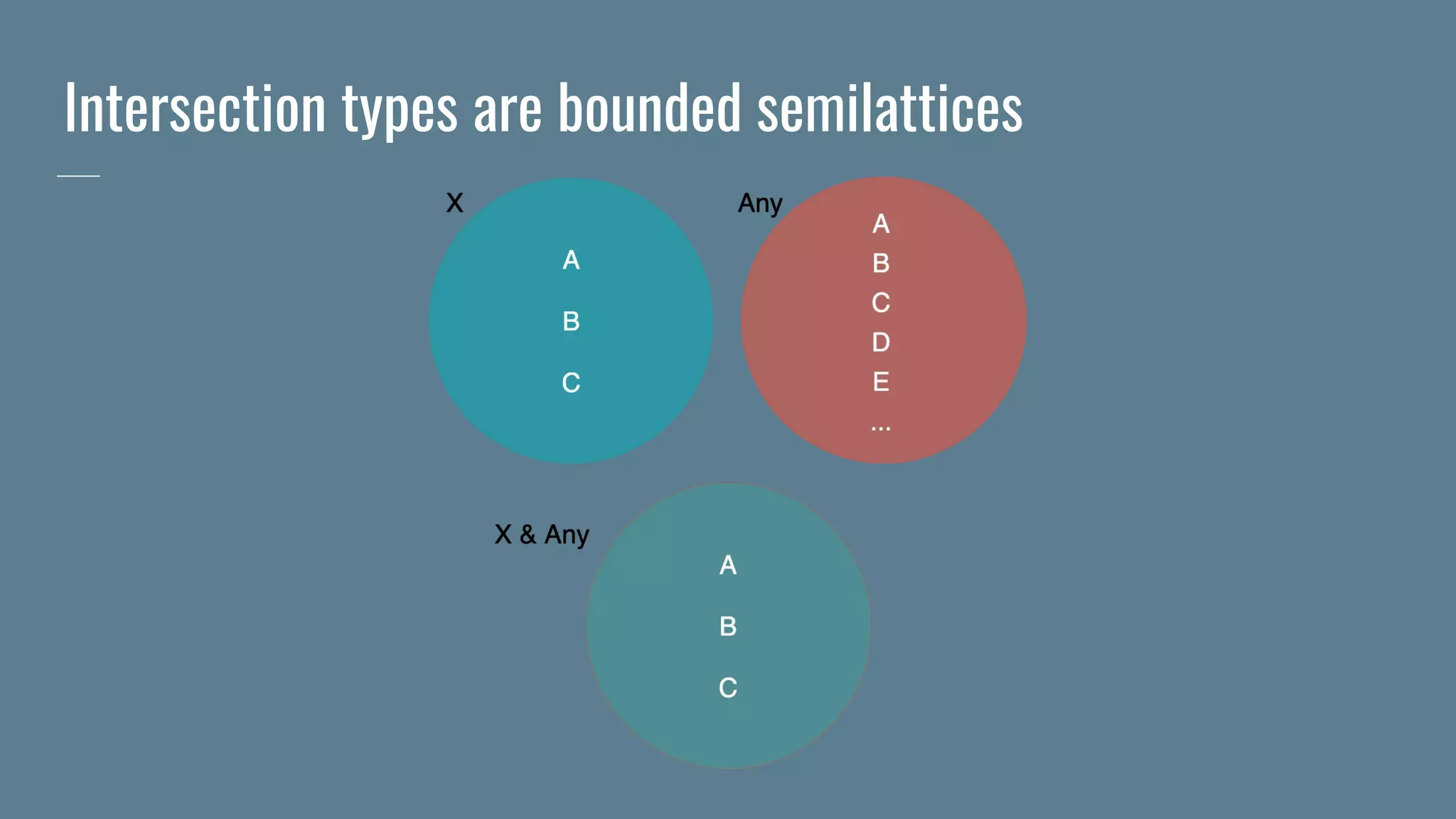
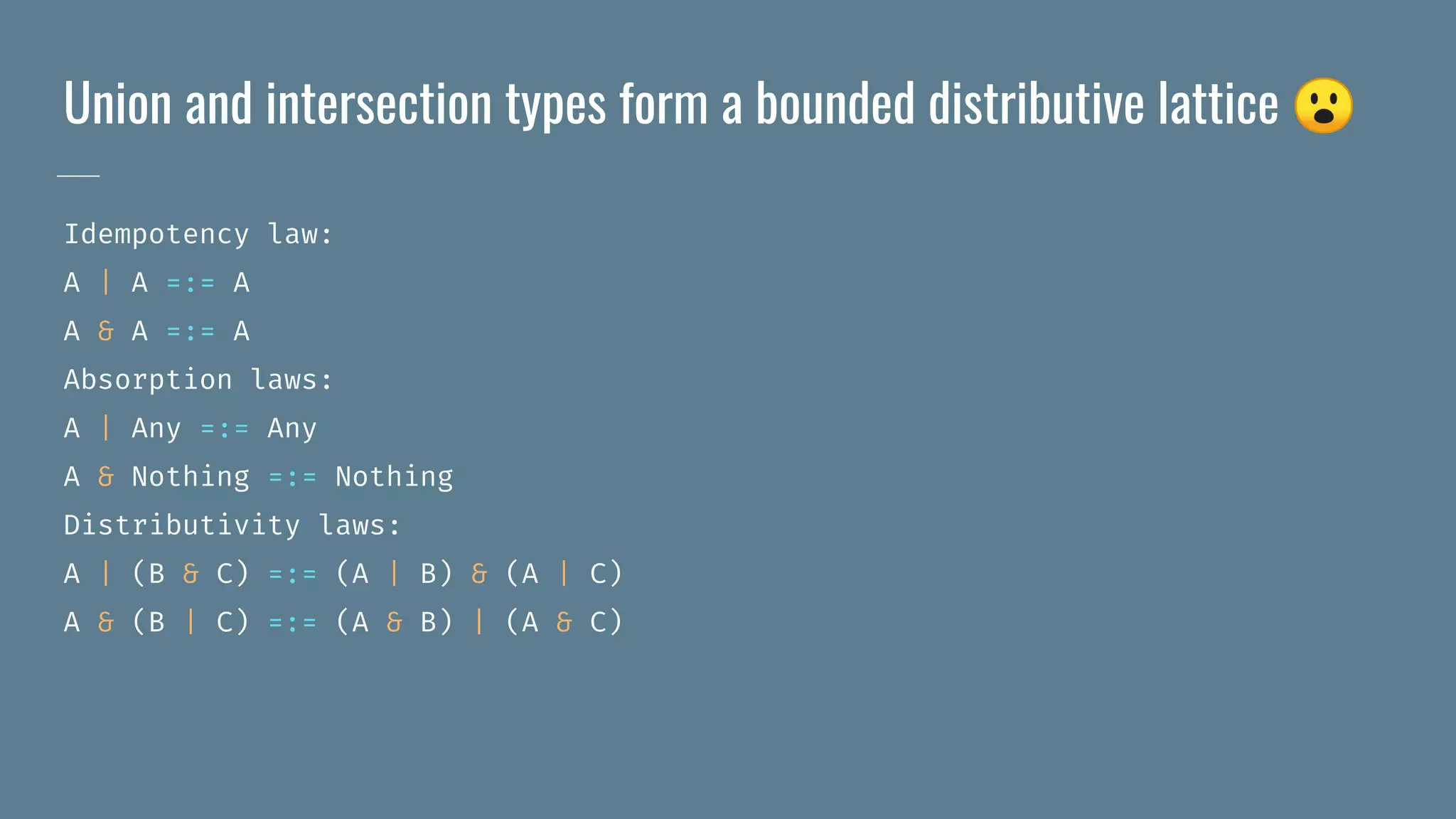
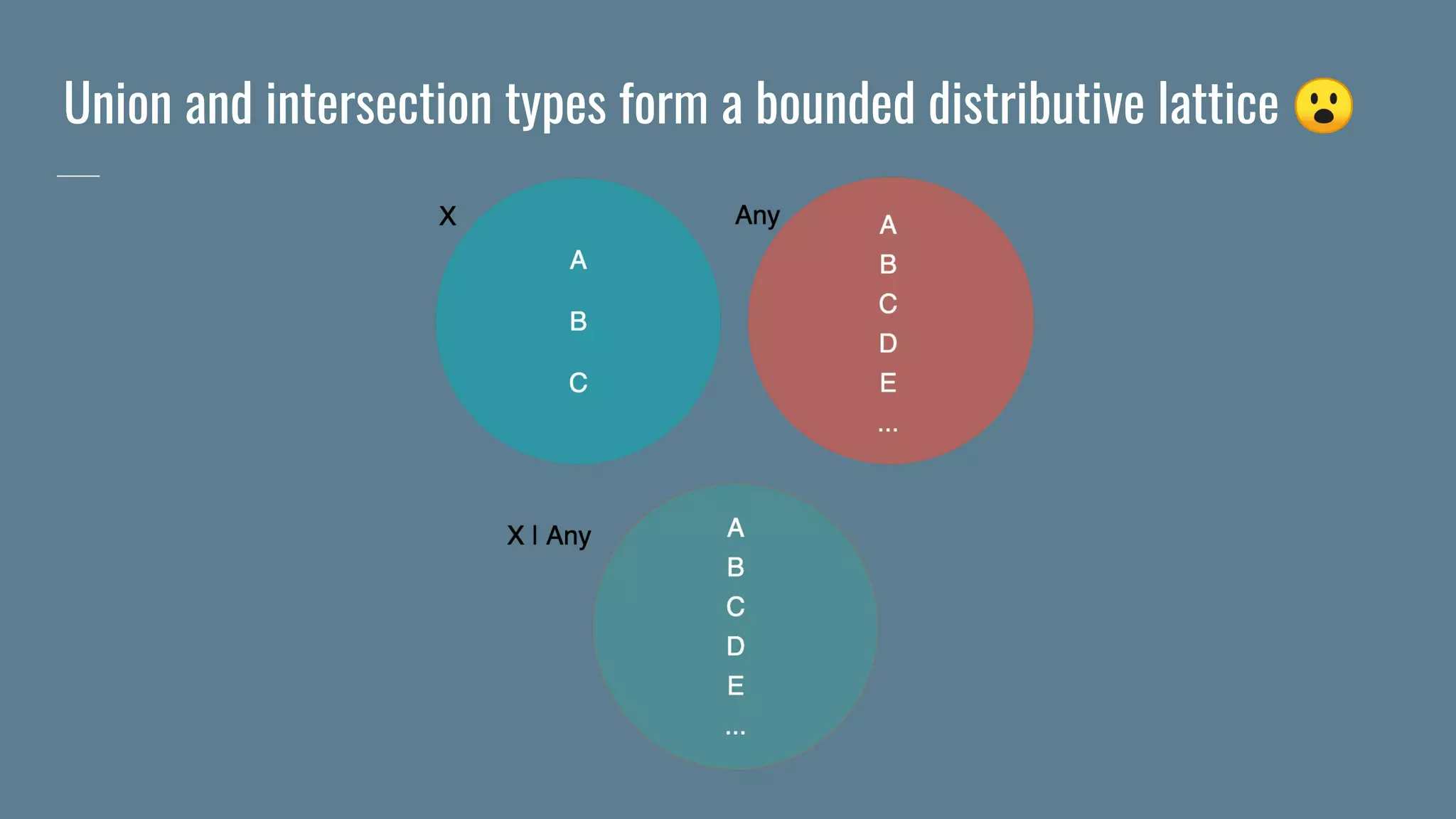
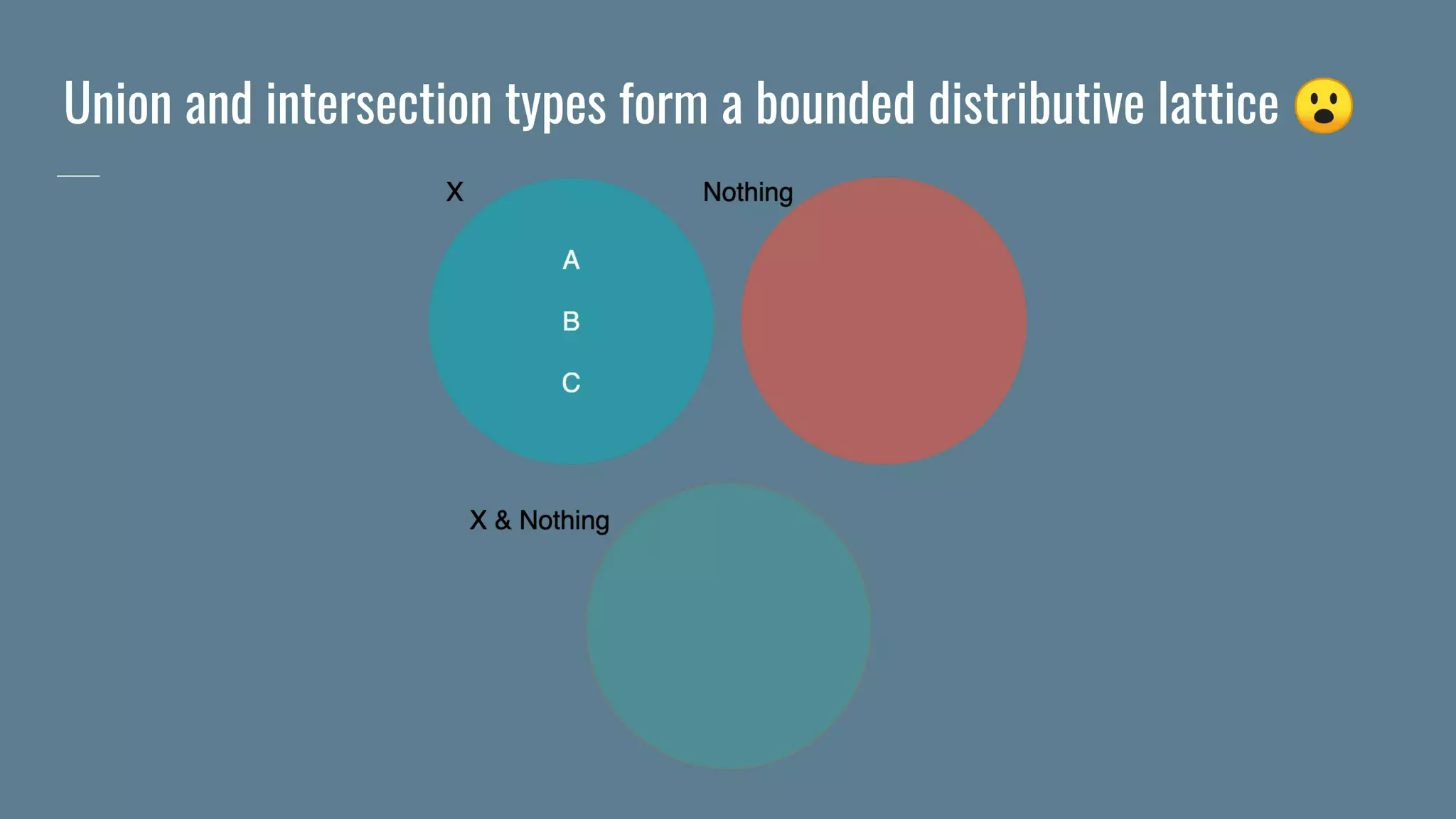
![How is this useful?
trait UnionMonoidal[F[_]] extends Functor[F] {
def union[A, B](fa: F[A], fb: F[B]): F[A | B]
def empty[A]: F[A]
def combineK[A](x: F[A], y: F[A]): F[A] =
union(x, y)
def sum[A, B](fa: F[A], fb: F[B]): F[Either[A, B]] =
combineK(map(fa)(Left(_)), map(fb)(Right(_)))
}](https://image.slidesharecdn.com/monoidsmonoidsmonoids-190902212037/75/Monoids-monoids-monoids-51-2048.jpg)
![How is this useful?
Either[Unit, A] <-> Option[A]
Either[Nothing, A] <-> A
(A, Unit) <-> A
ApplicativeError[F, Unit] ⇔ Alternative[F]
MonadError[F, Nothing] ⇔ Monad[F]
MonadWriter[F, Unit] ⇔ Monad[F]](https://image.slidesharecdn.com/monoidsmonoidsmonoids-190902212037/75/Monoids-monoids-monoids-52-2048.jpg)
![How is this useful?
sealed trait GList[+A, +B] {
def head: A | B = ...
}
case class Nil[B](b: B) extends GList[Nothing, B]
// ...
type List[A] = GList[A, Unit]
type NonEmptyList[A] = GList[A, Nothing]](https://image.slidesharecdn.com/monoidsmonoidsmonoids-190902212037/75/Monoids-monoids-monoids-53-2048.jpg)



